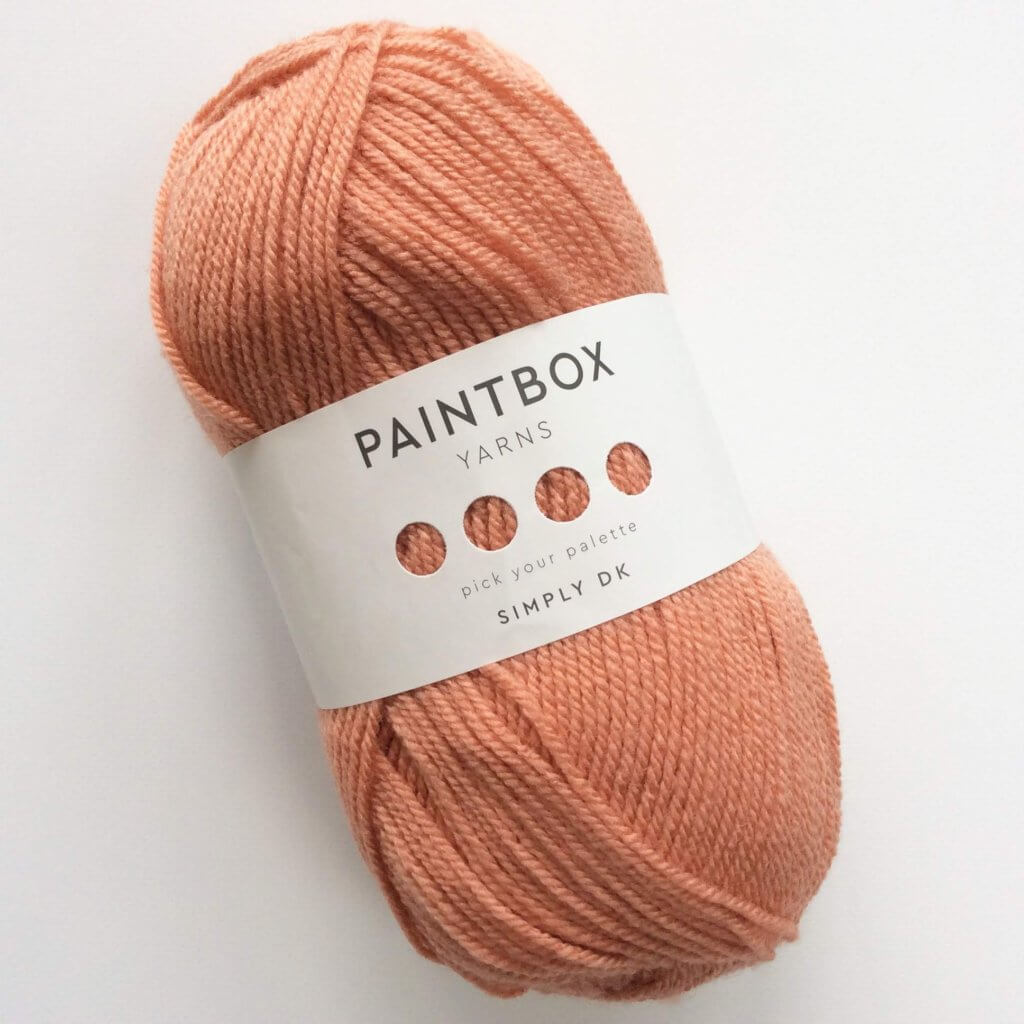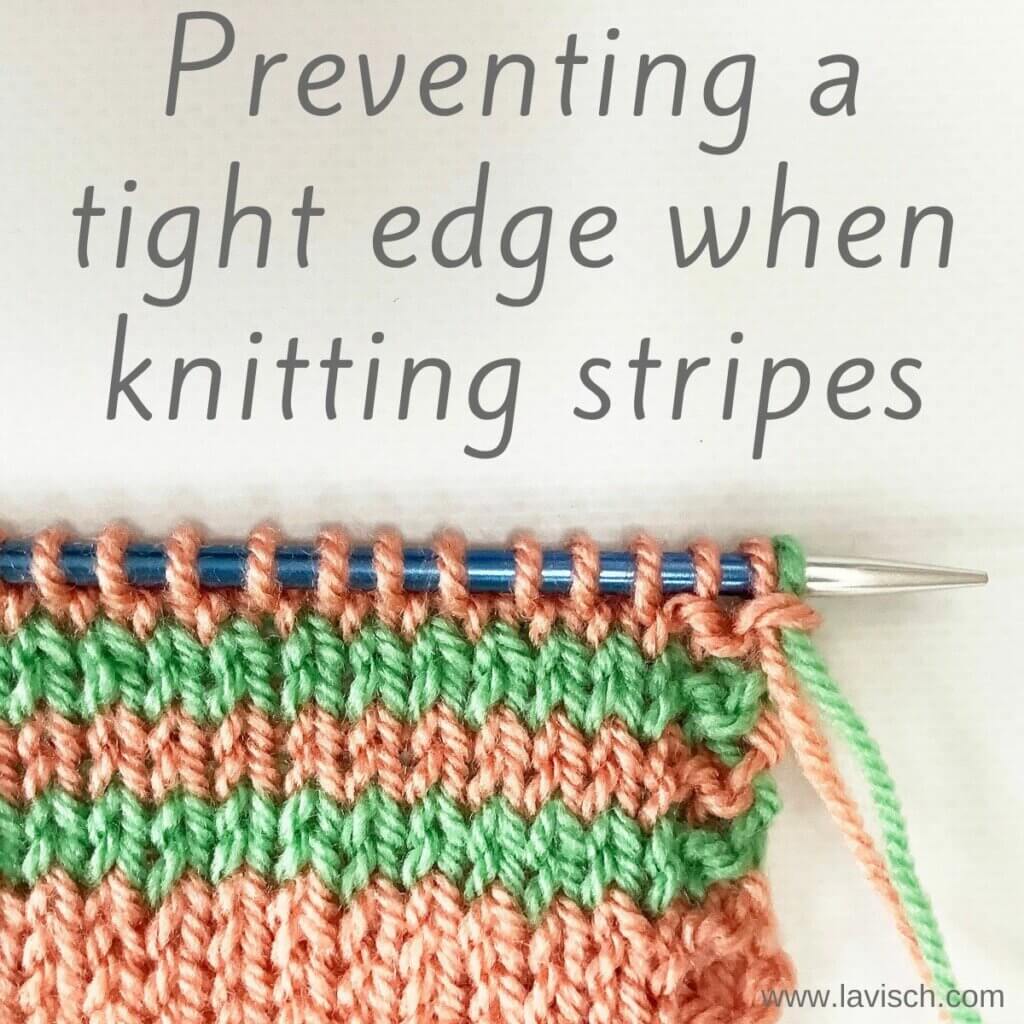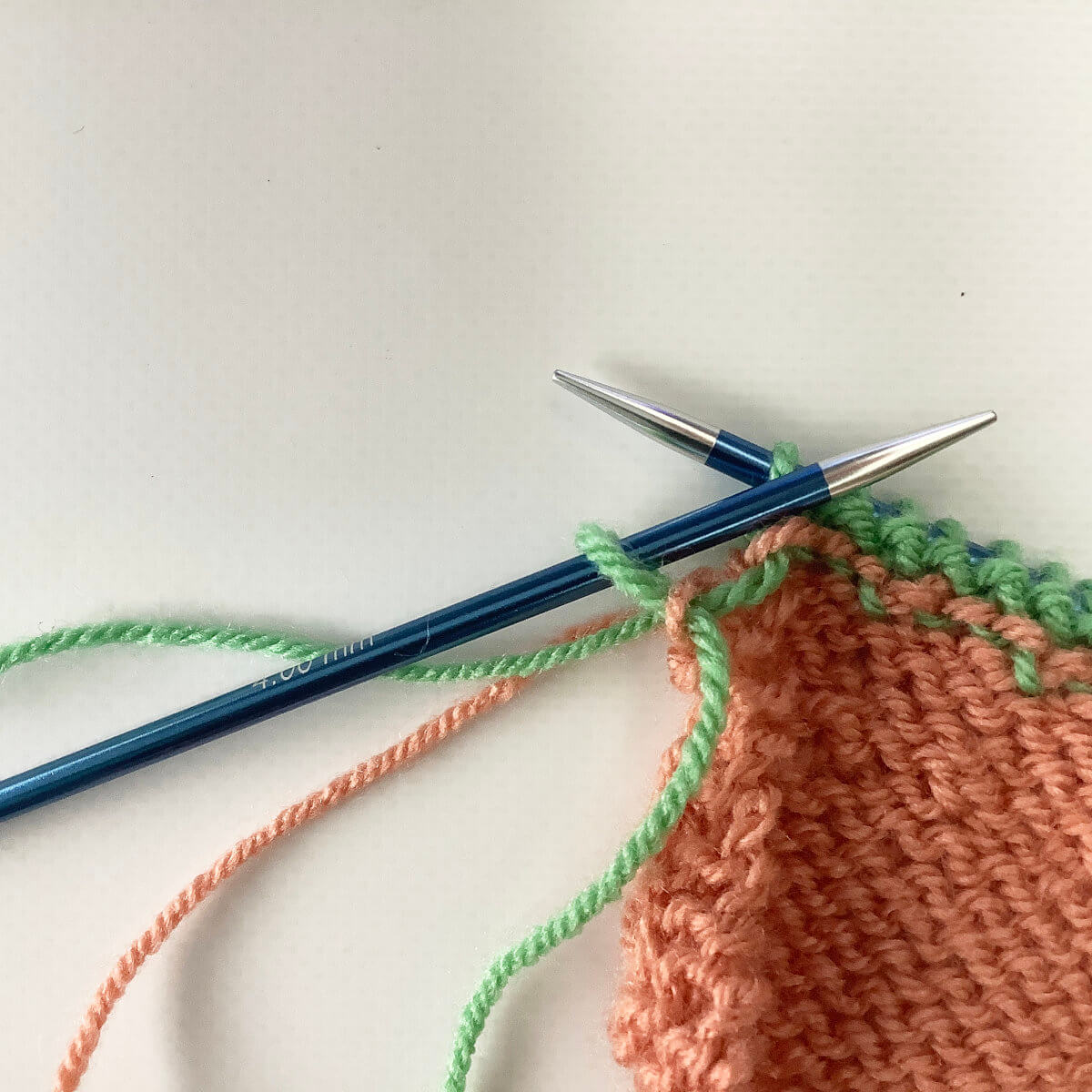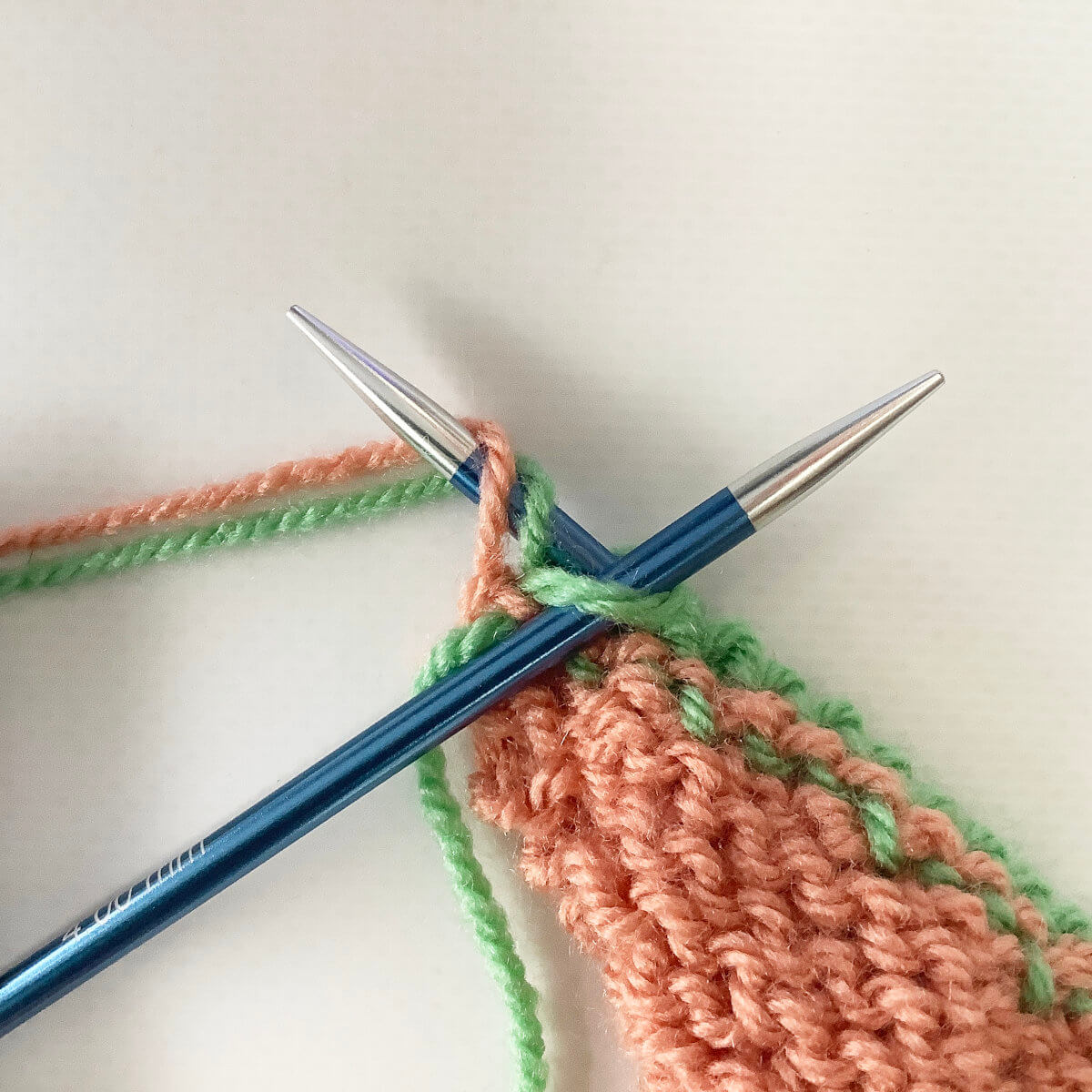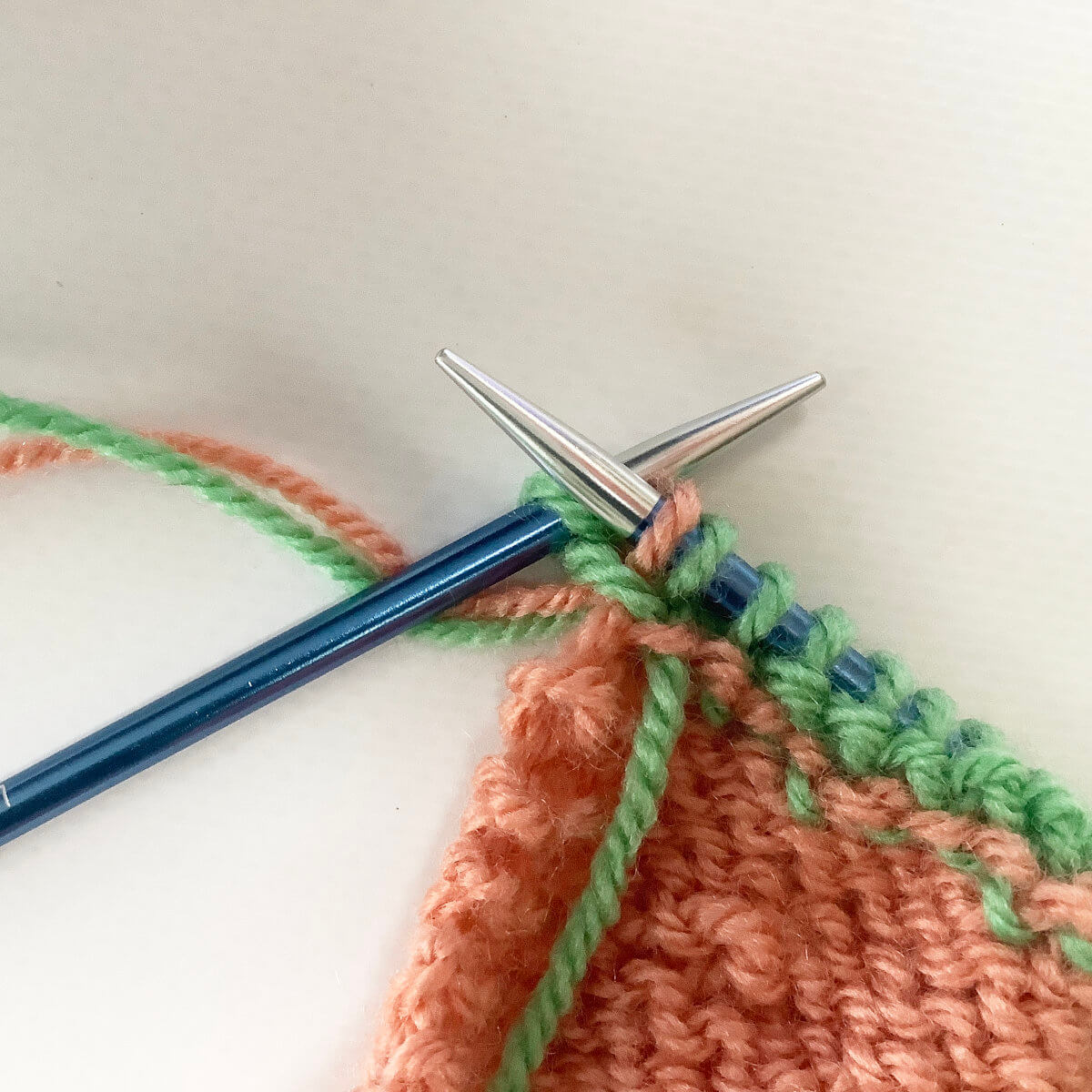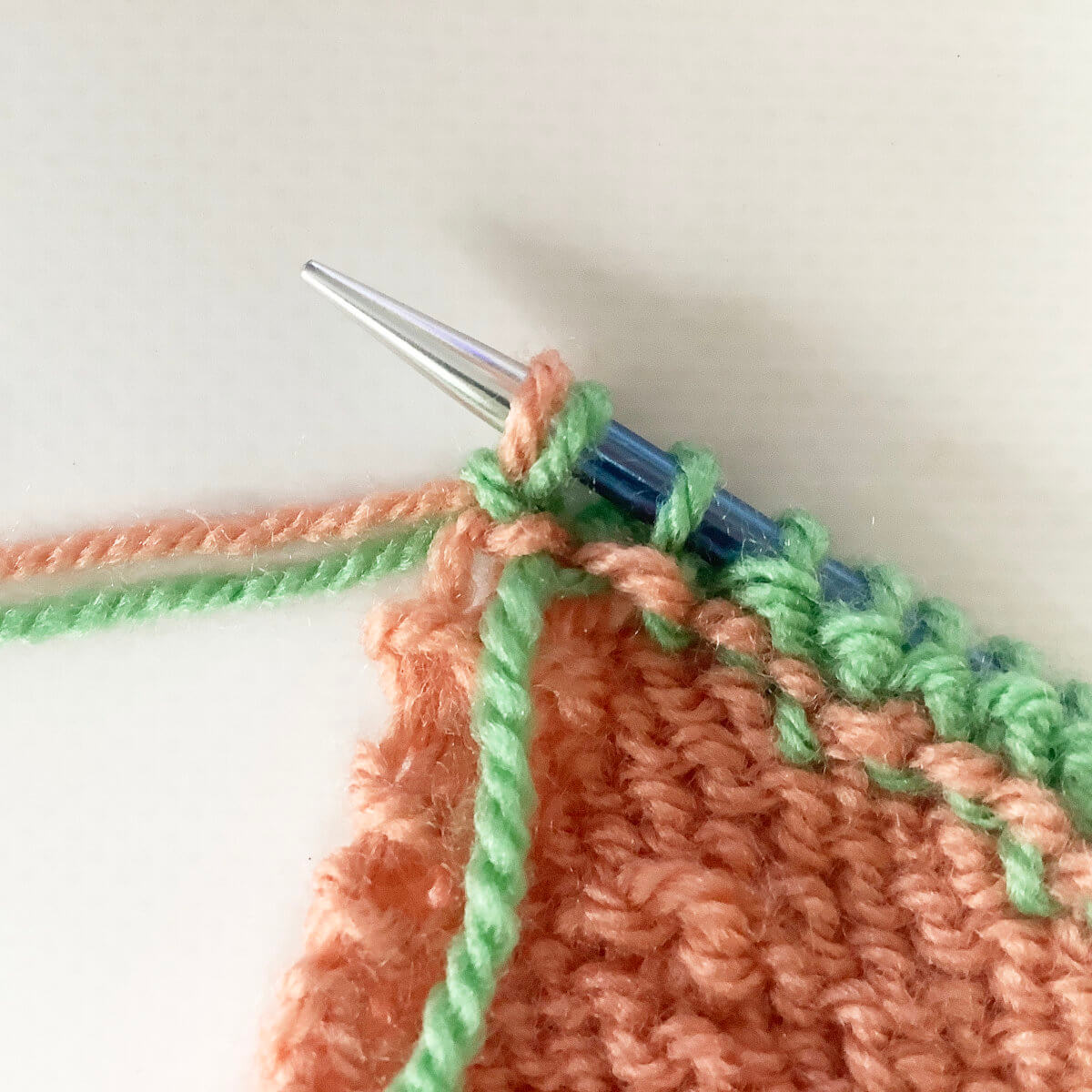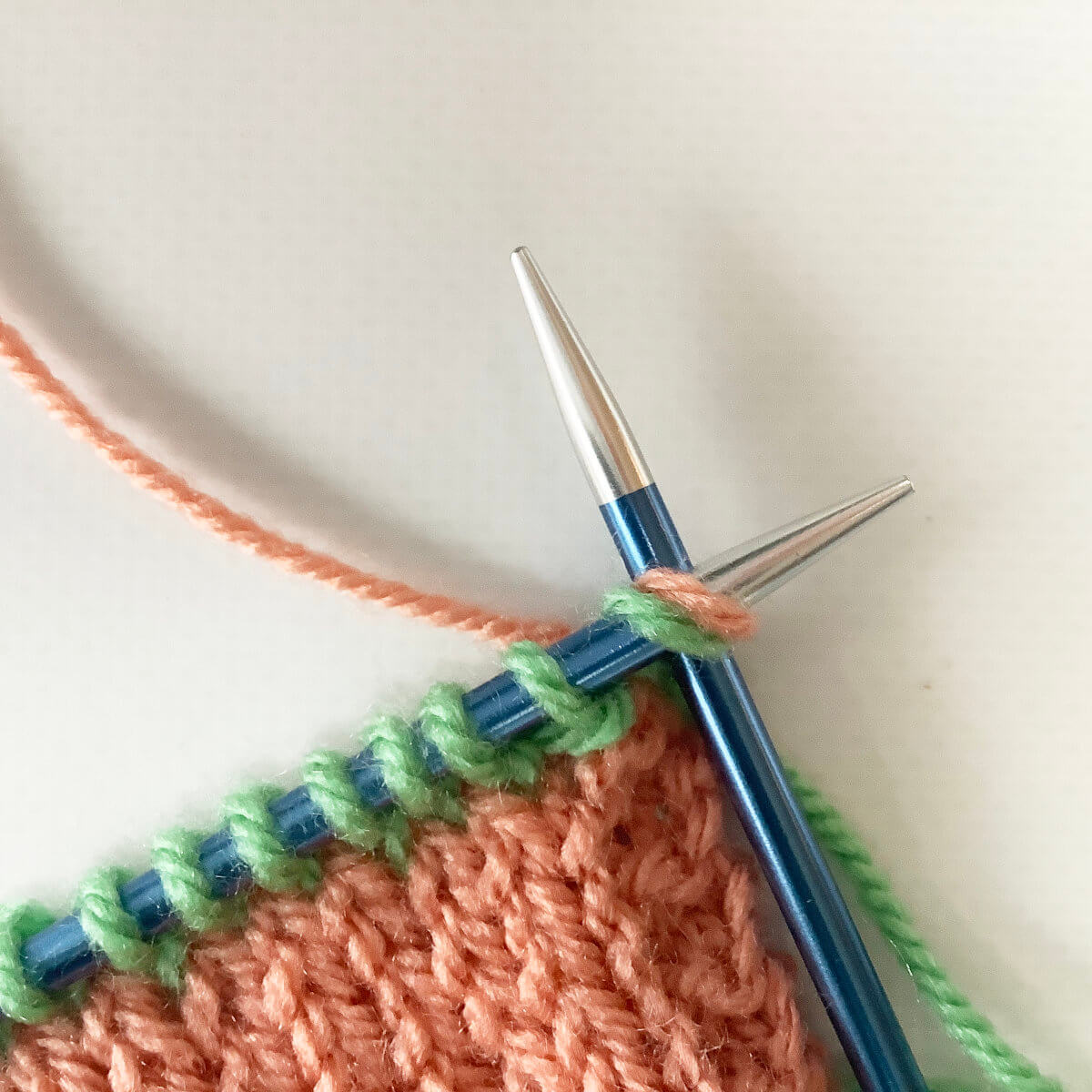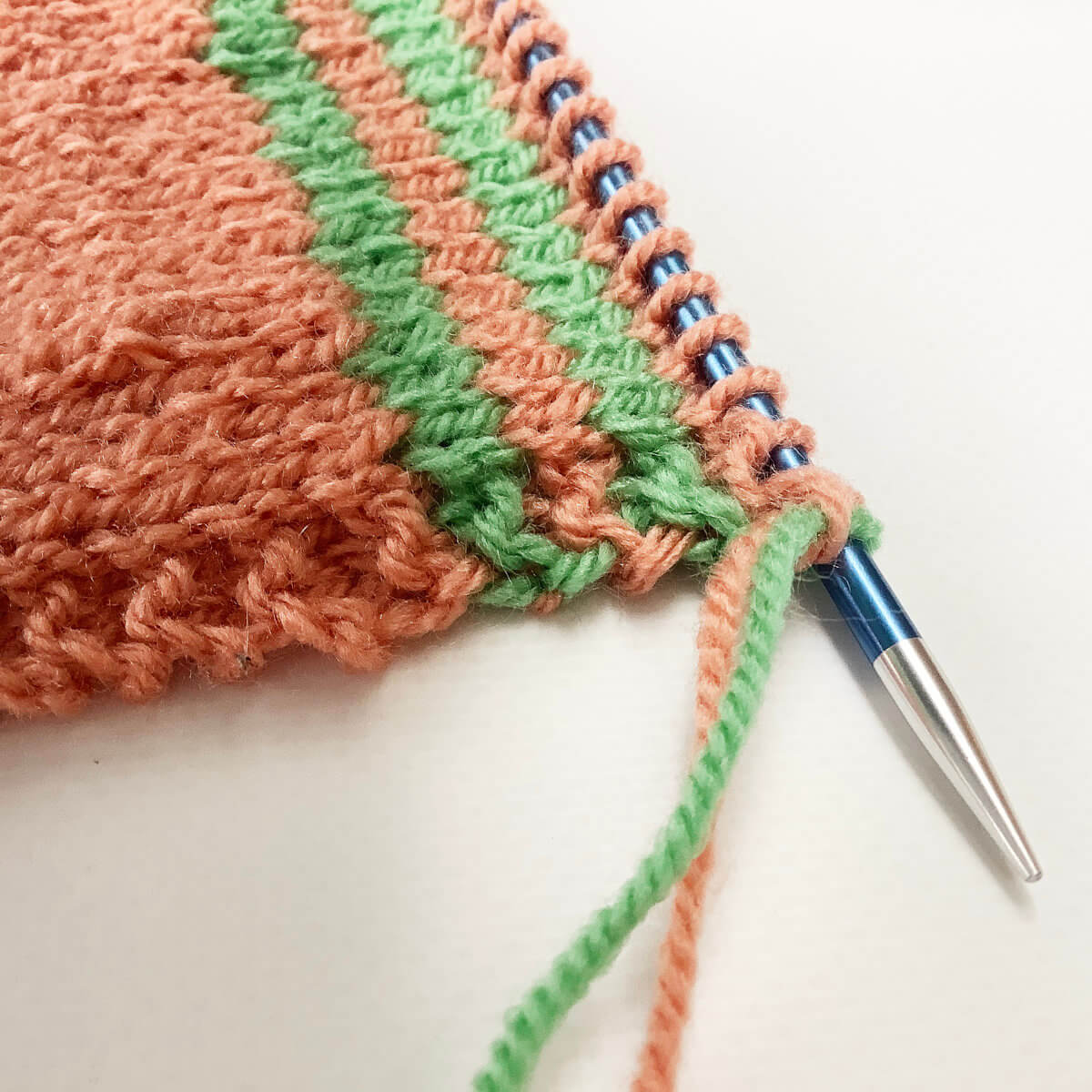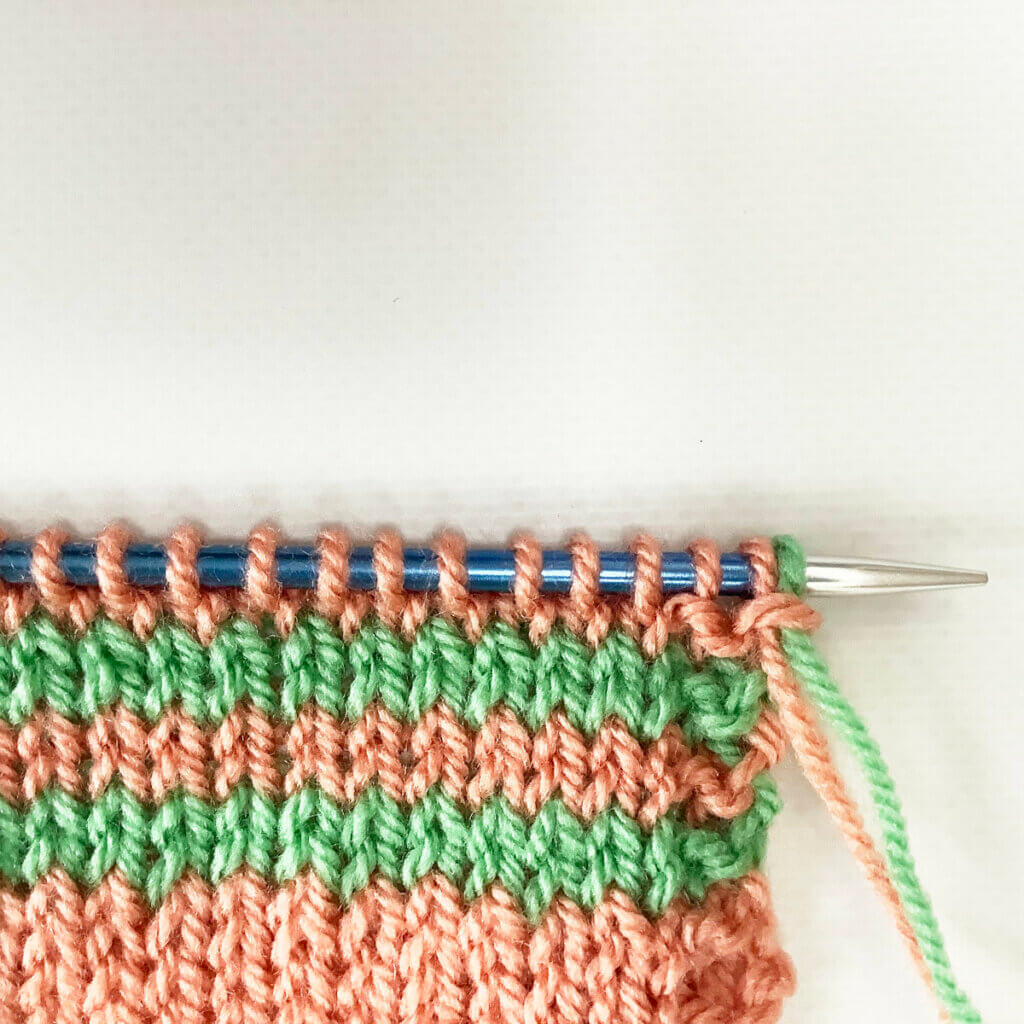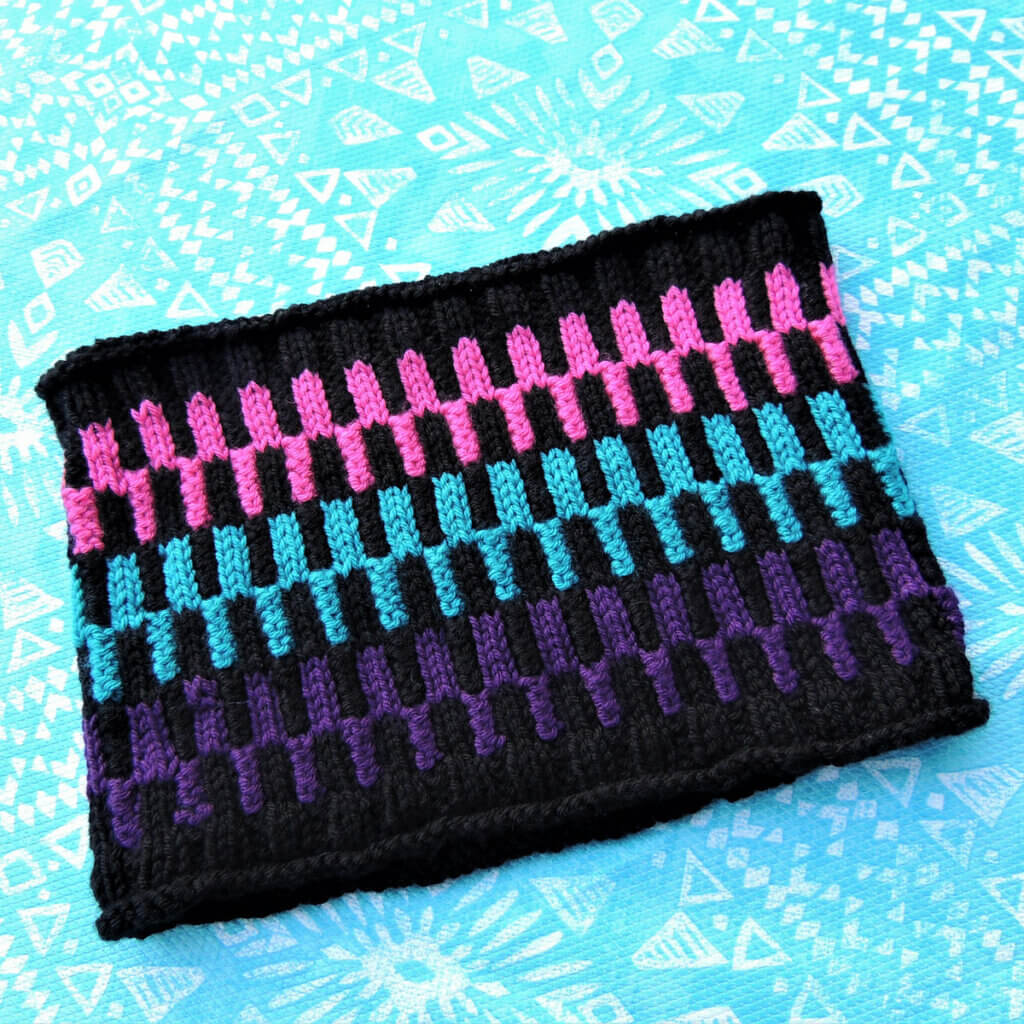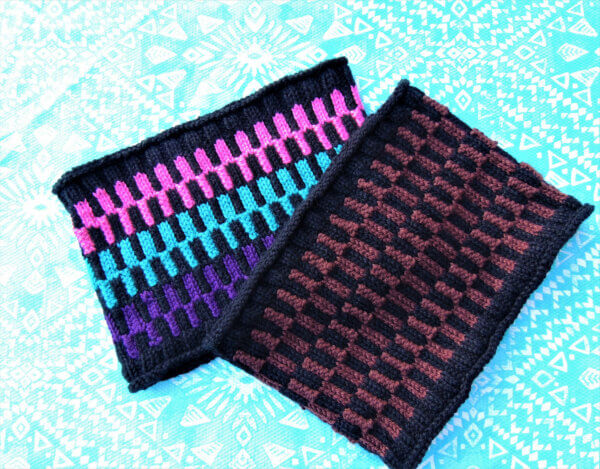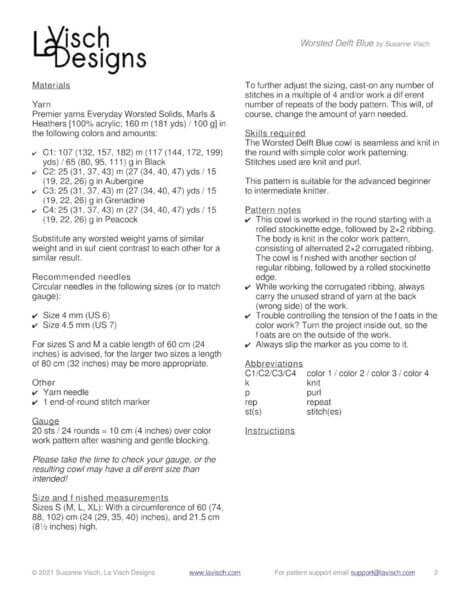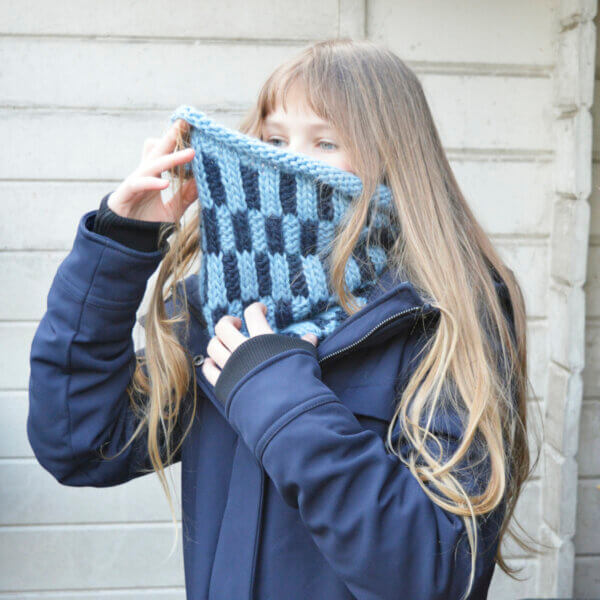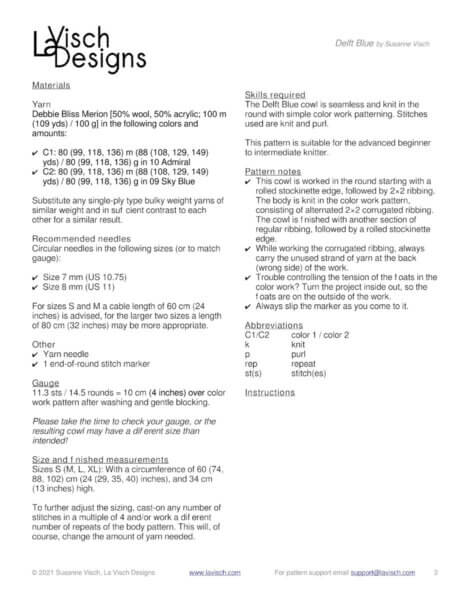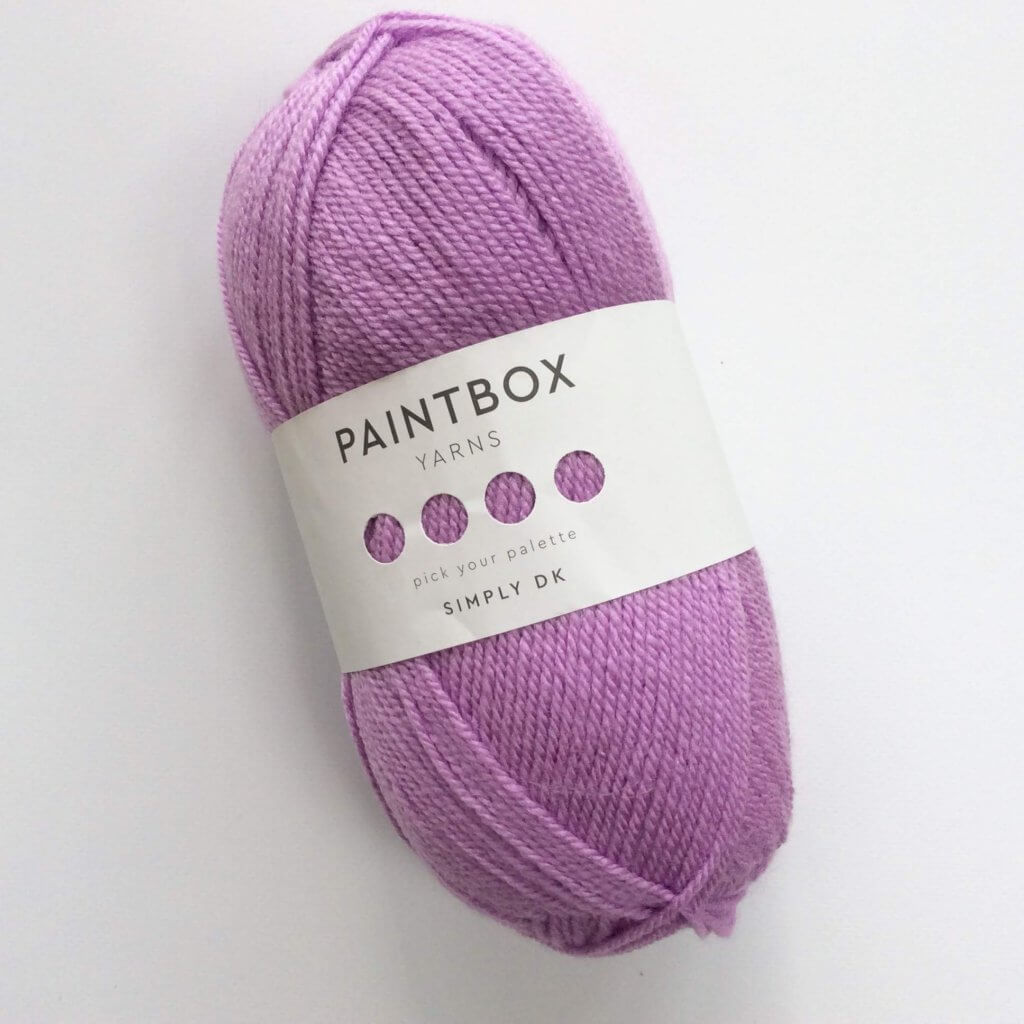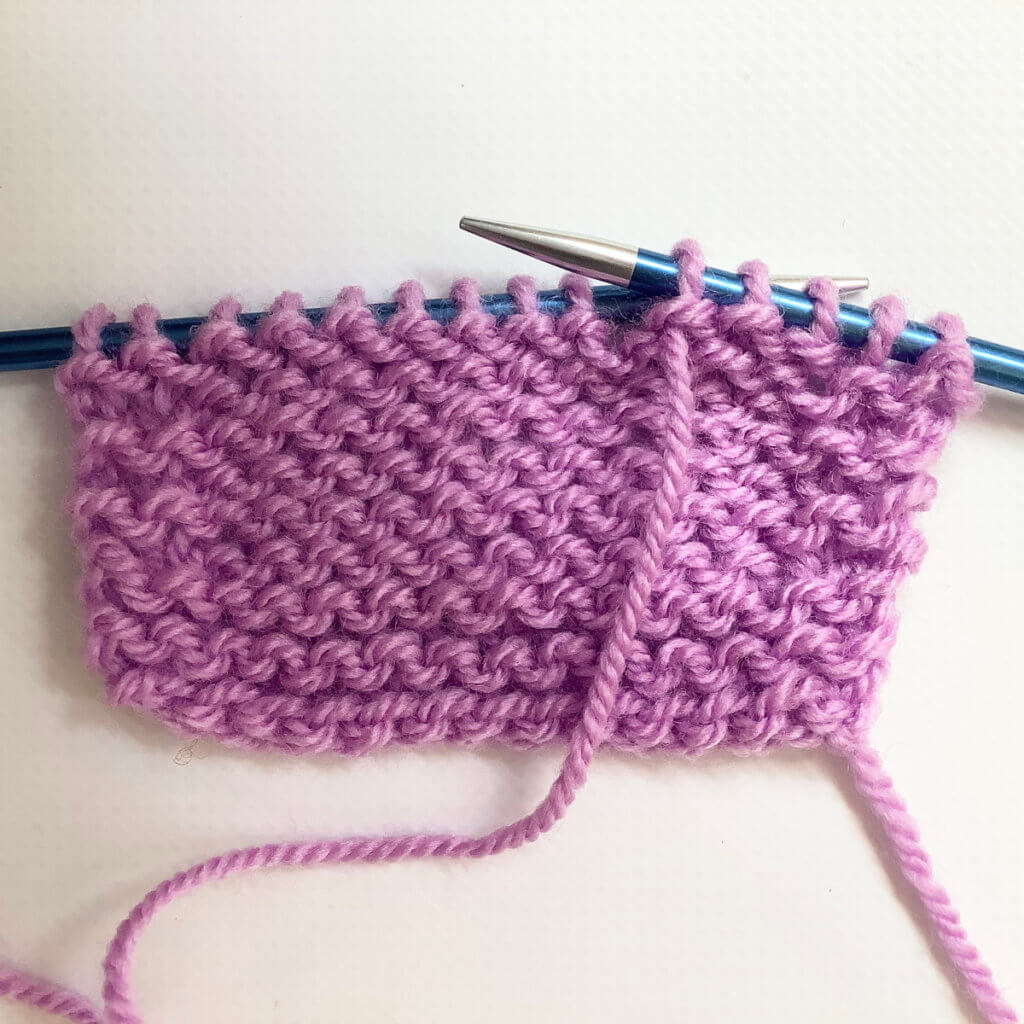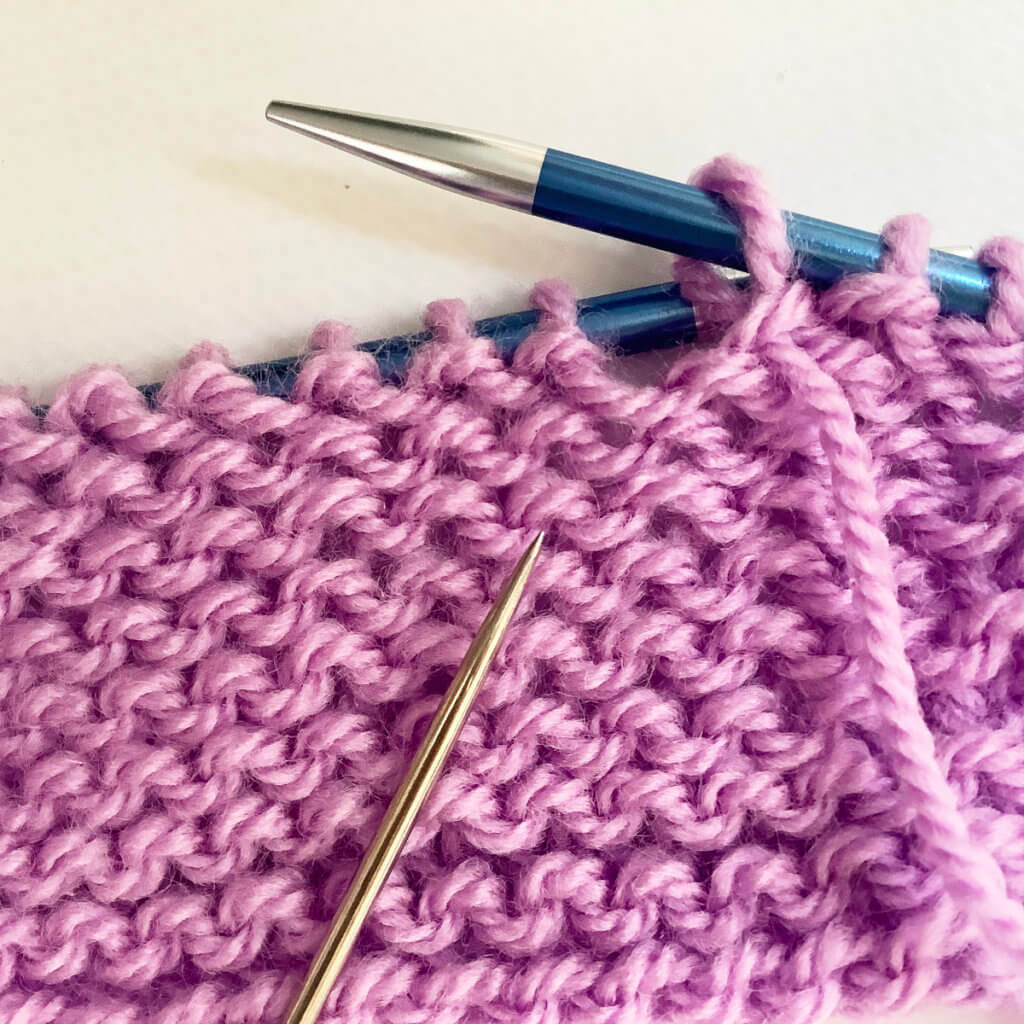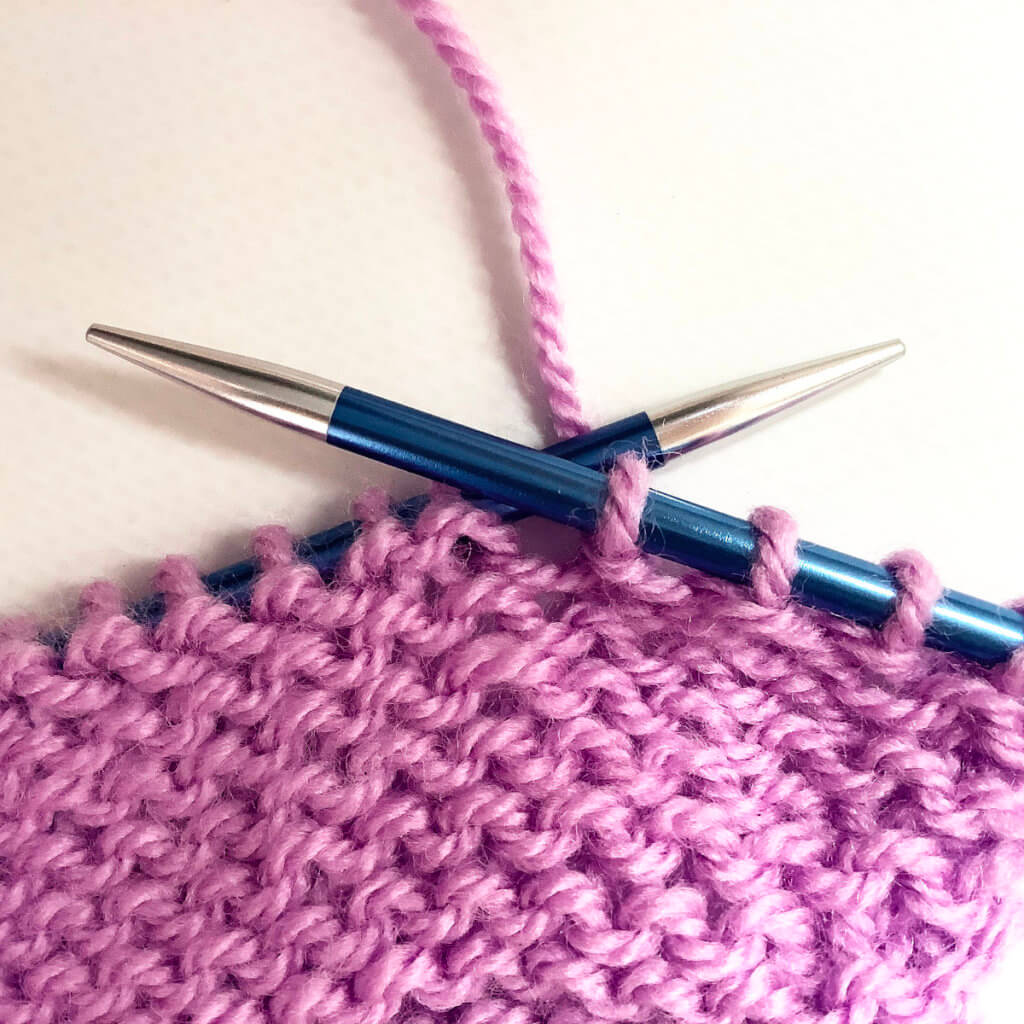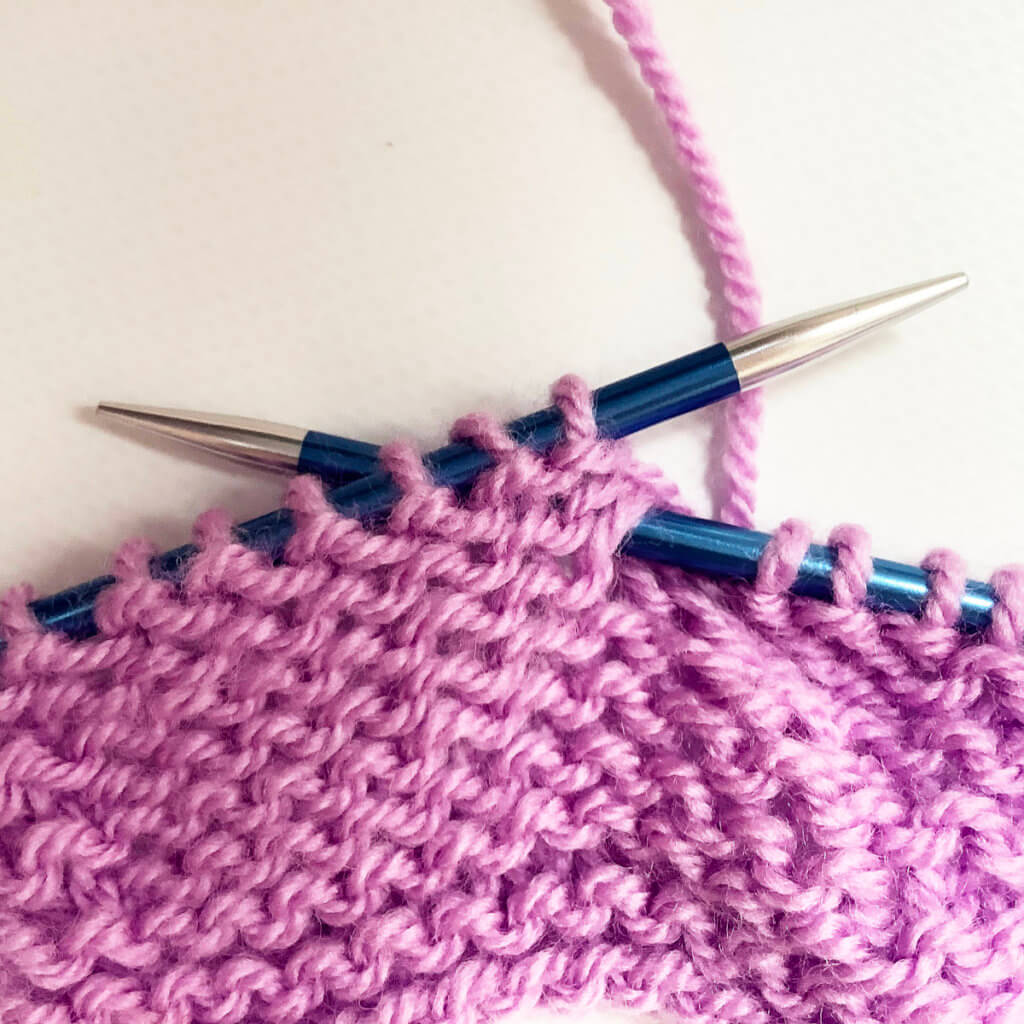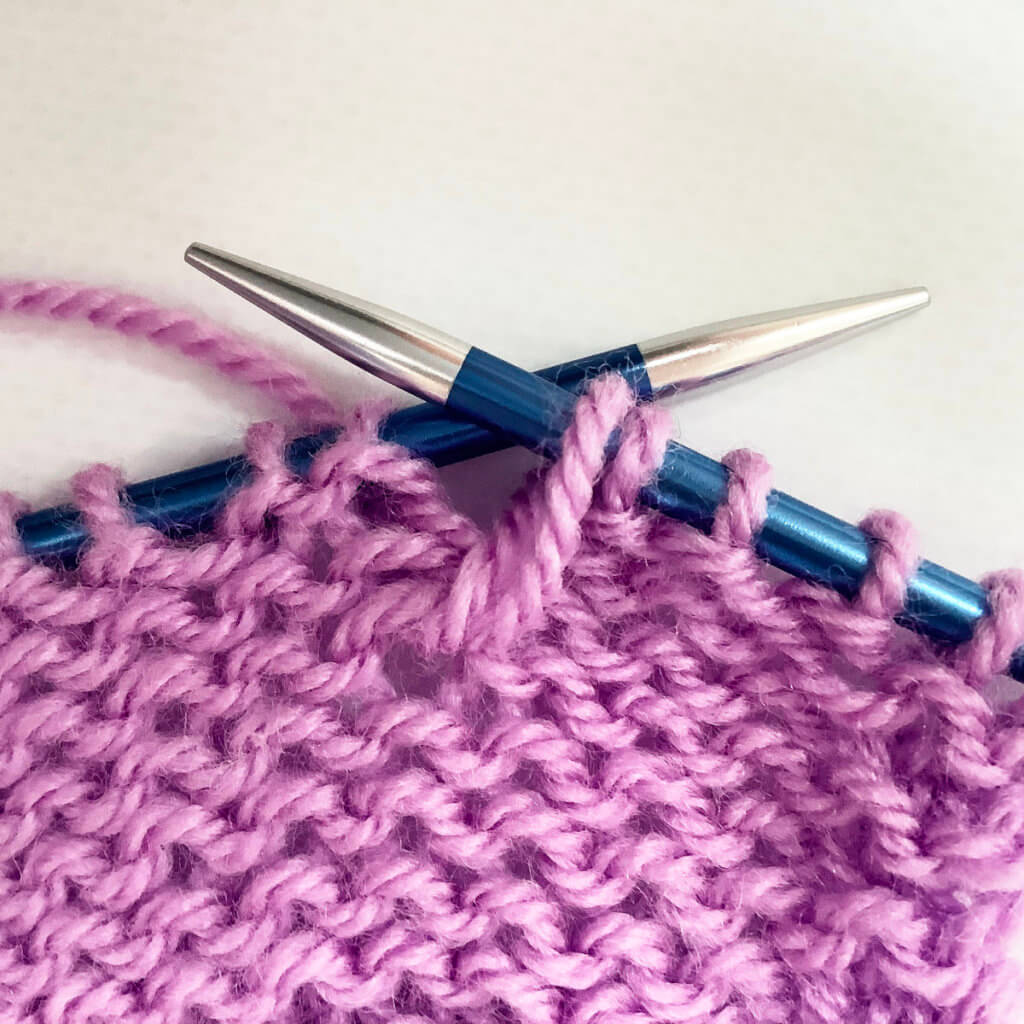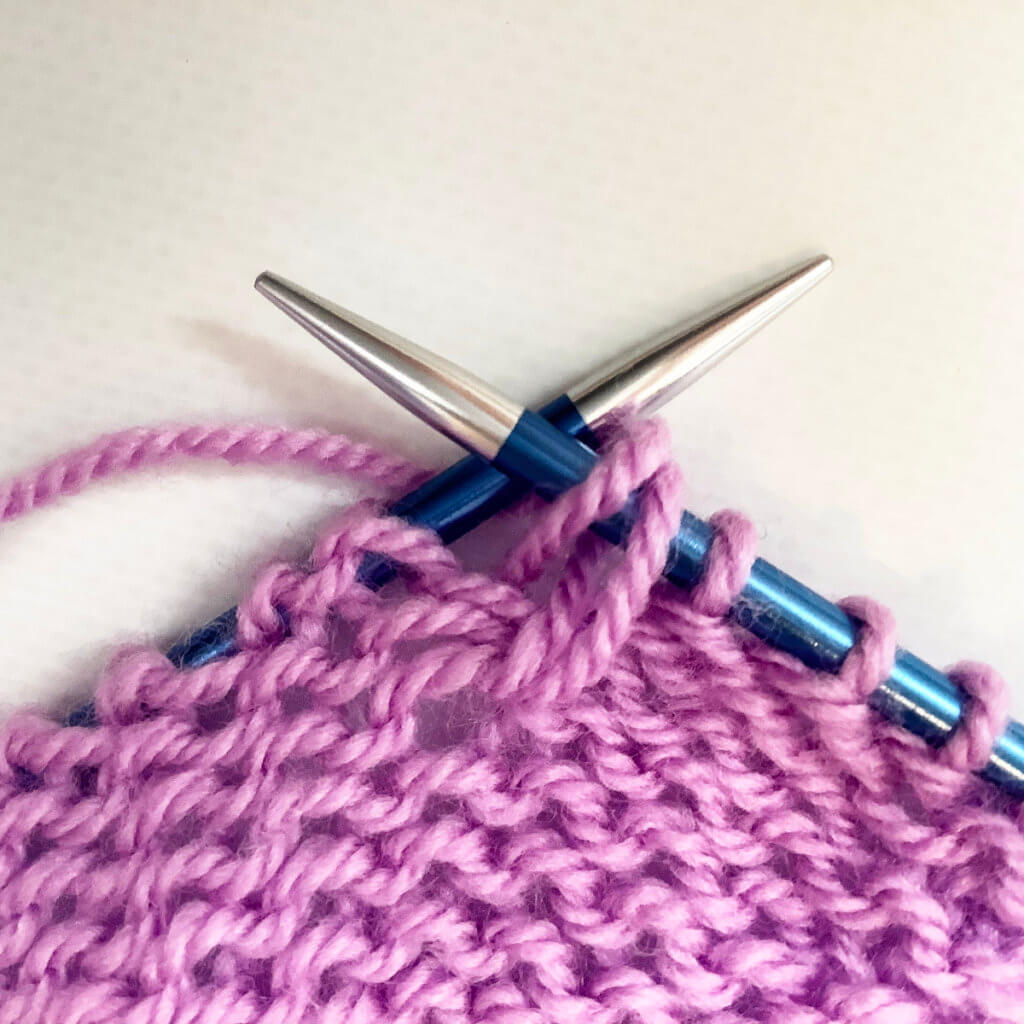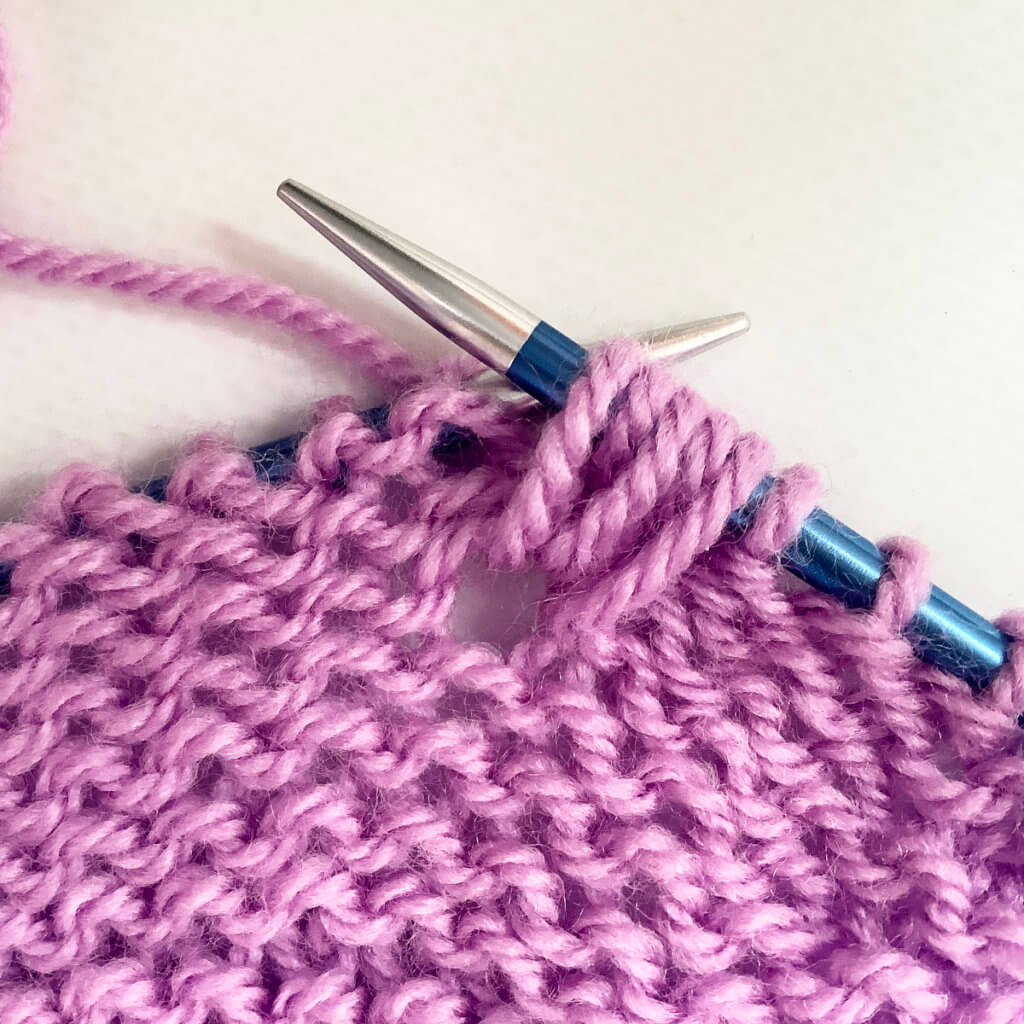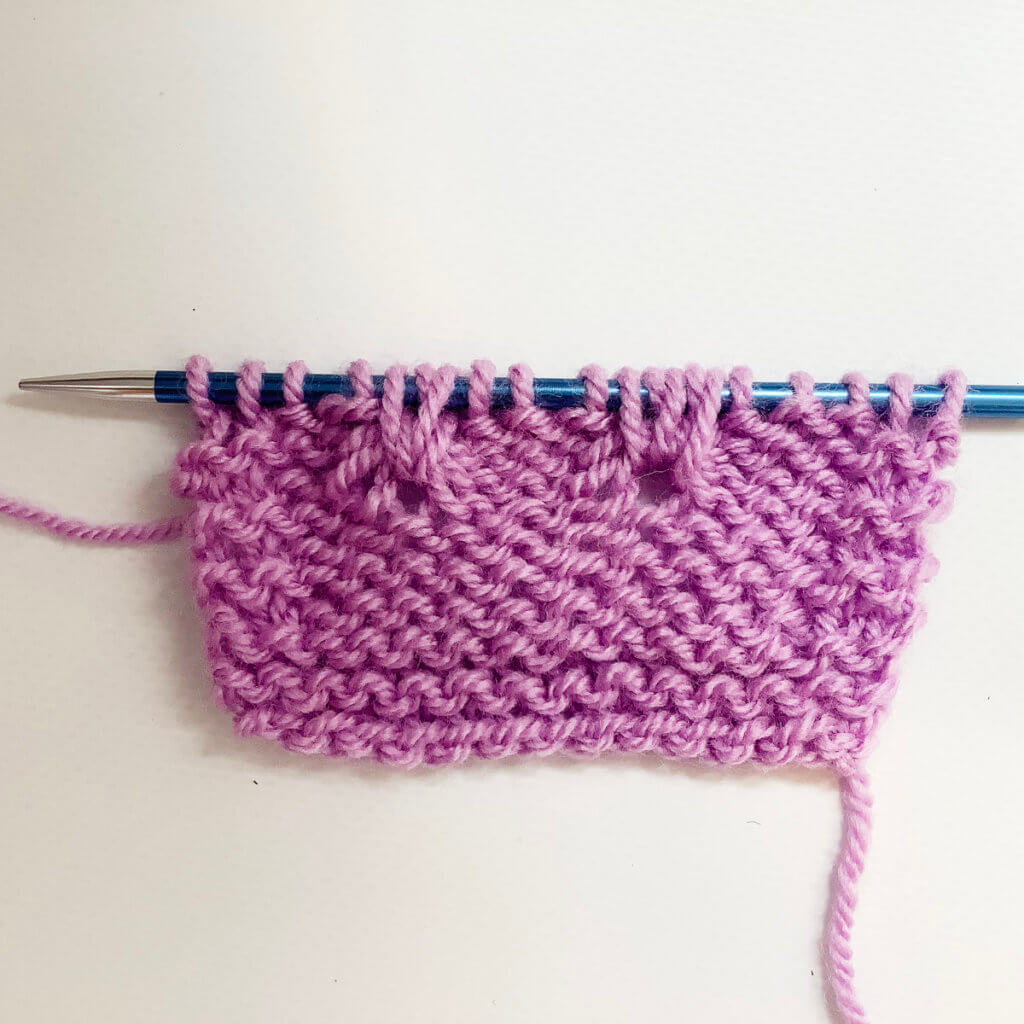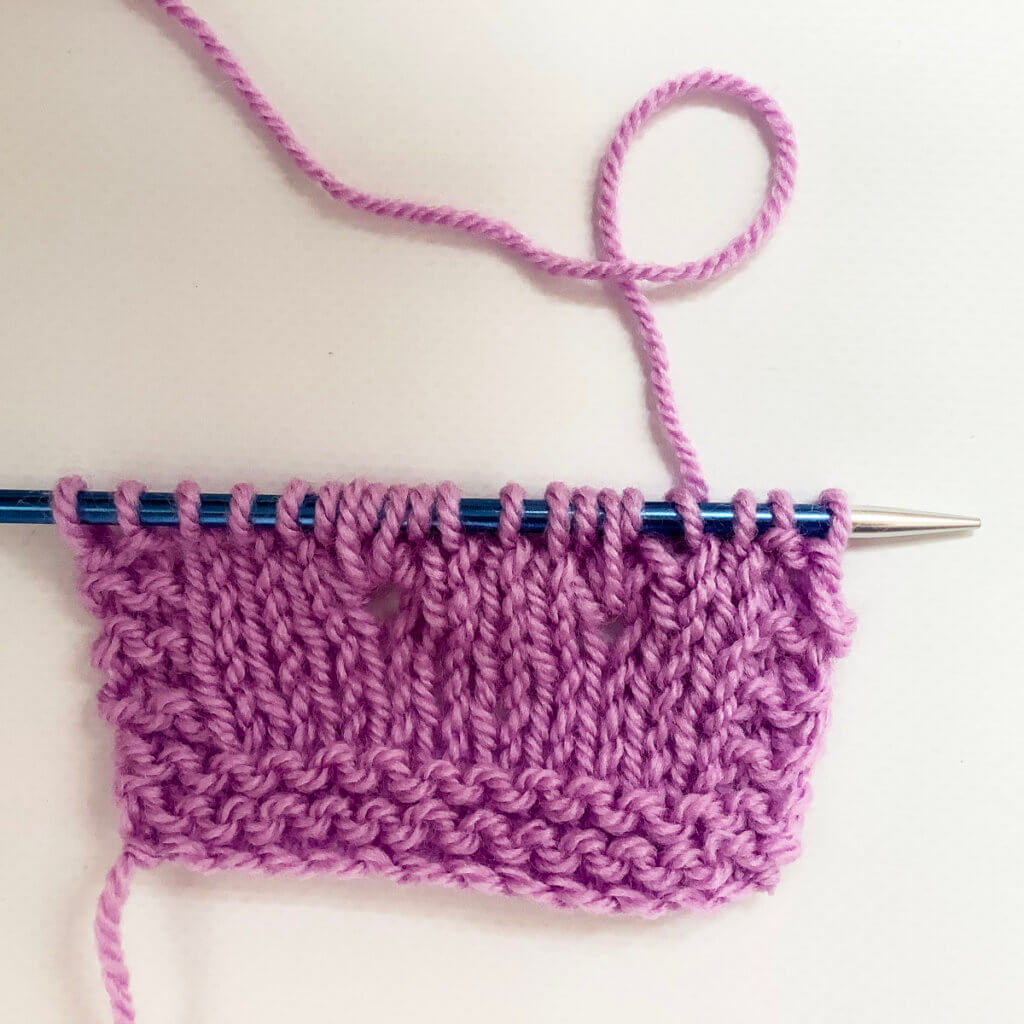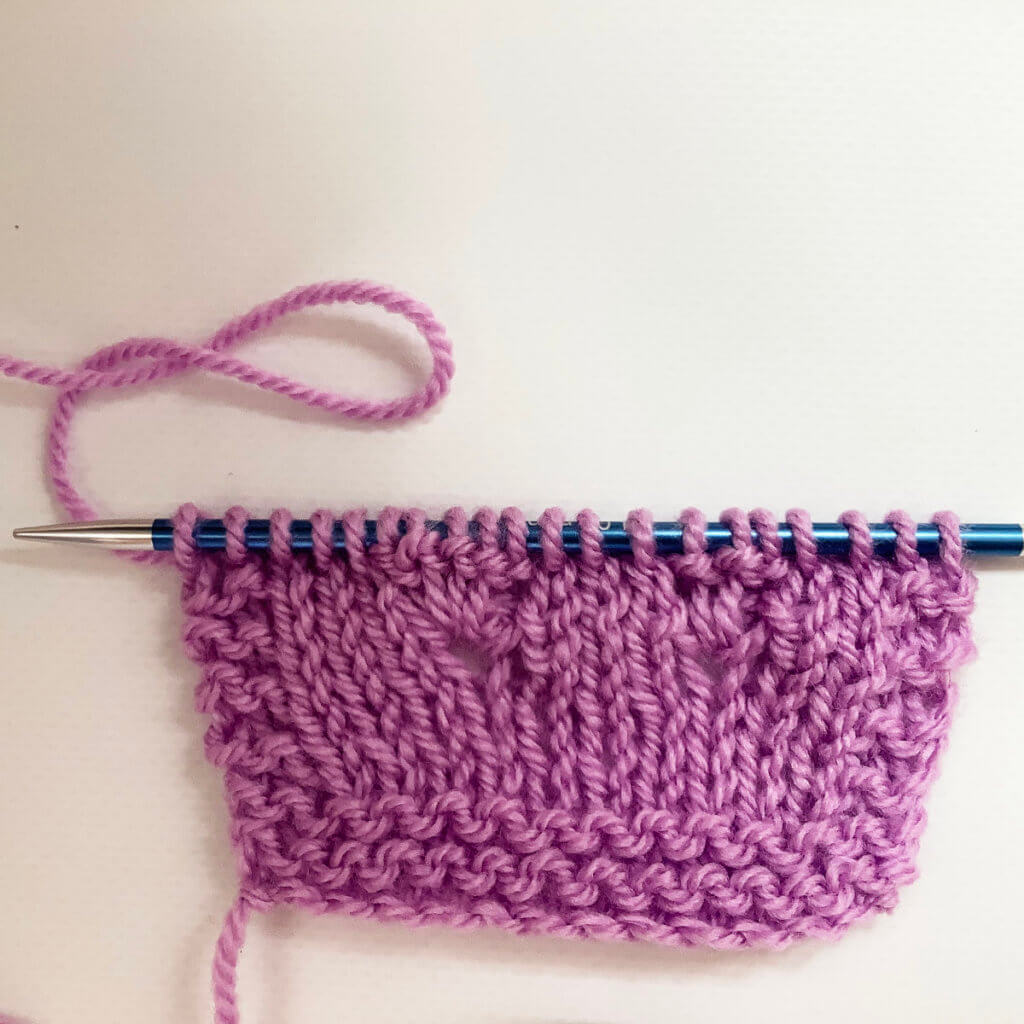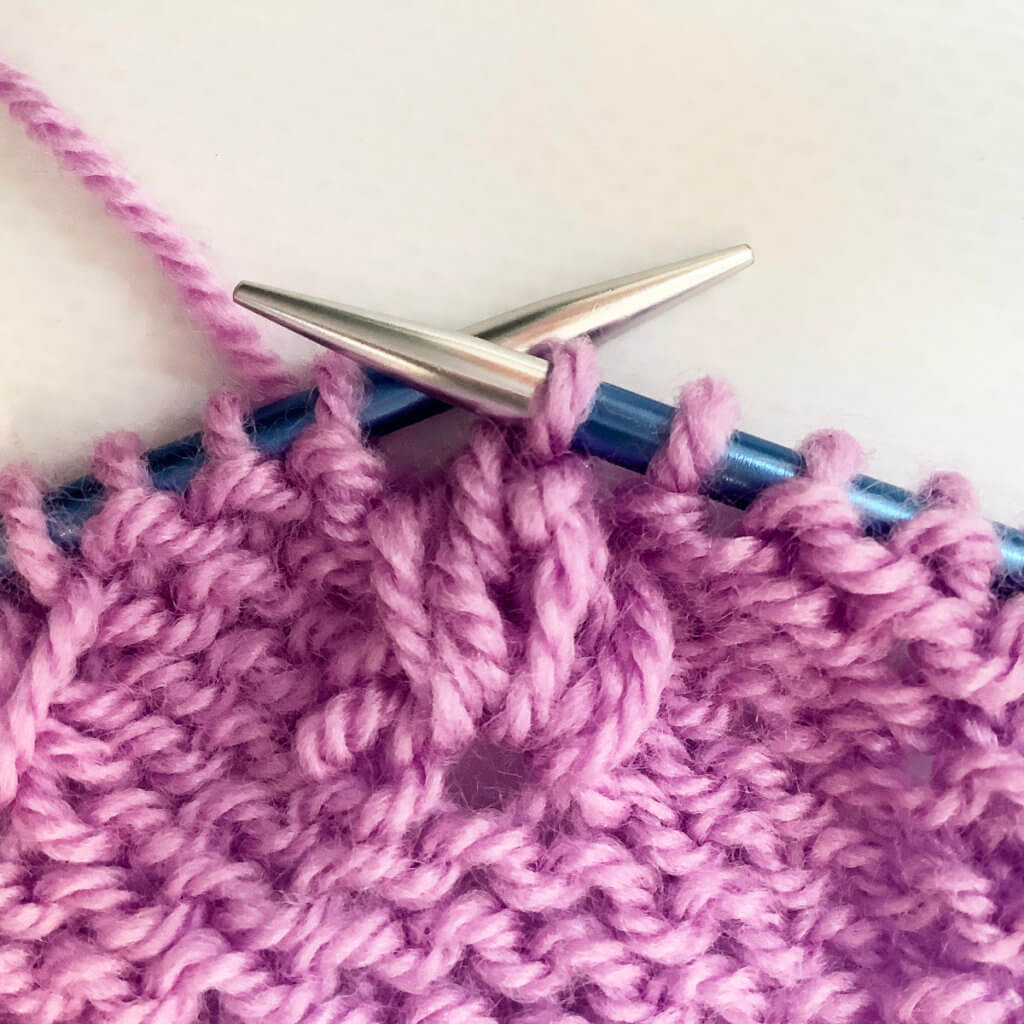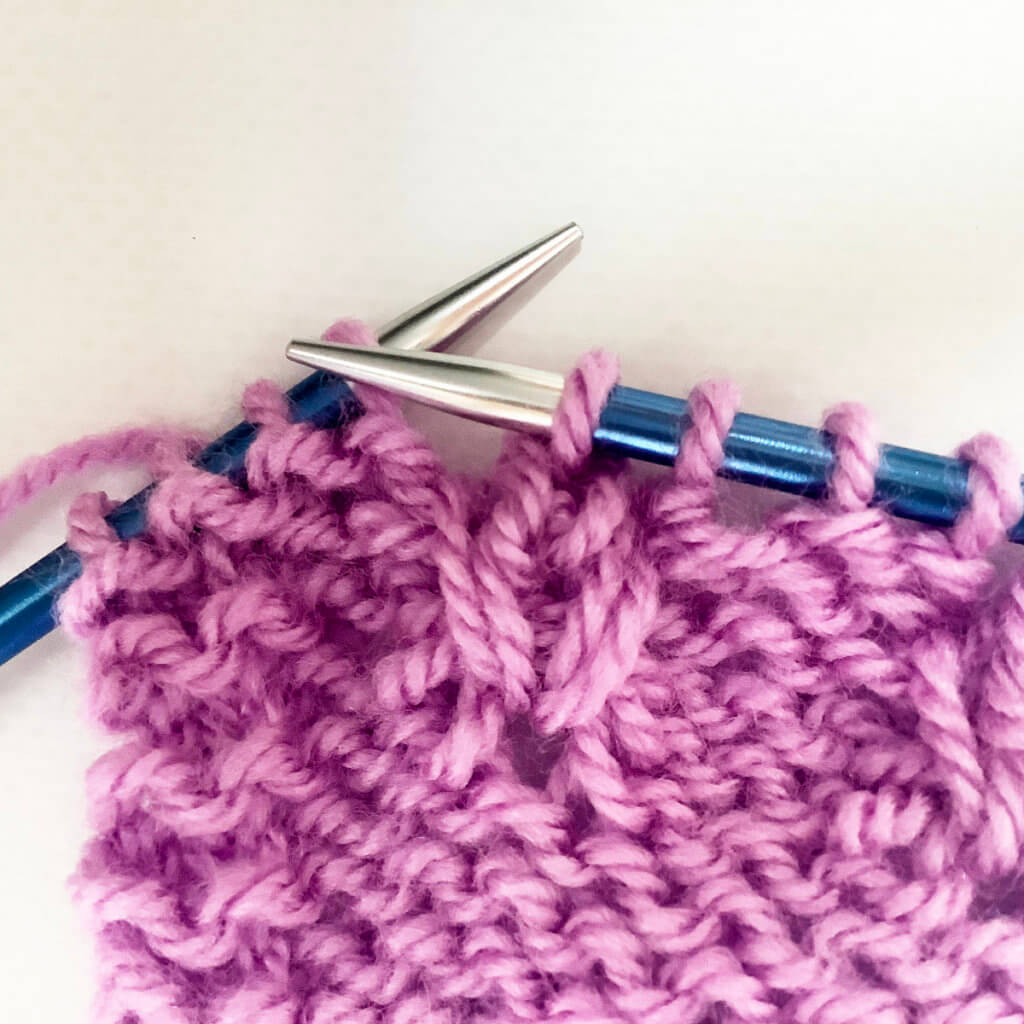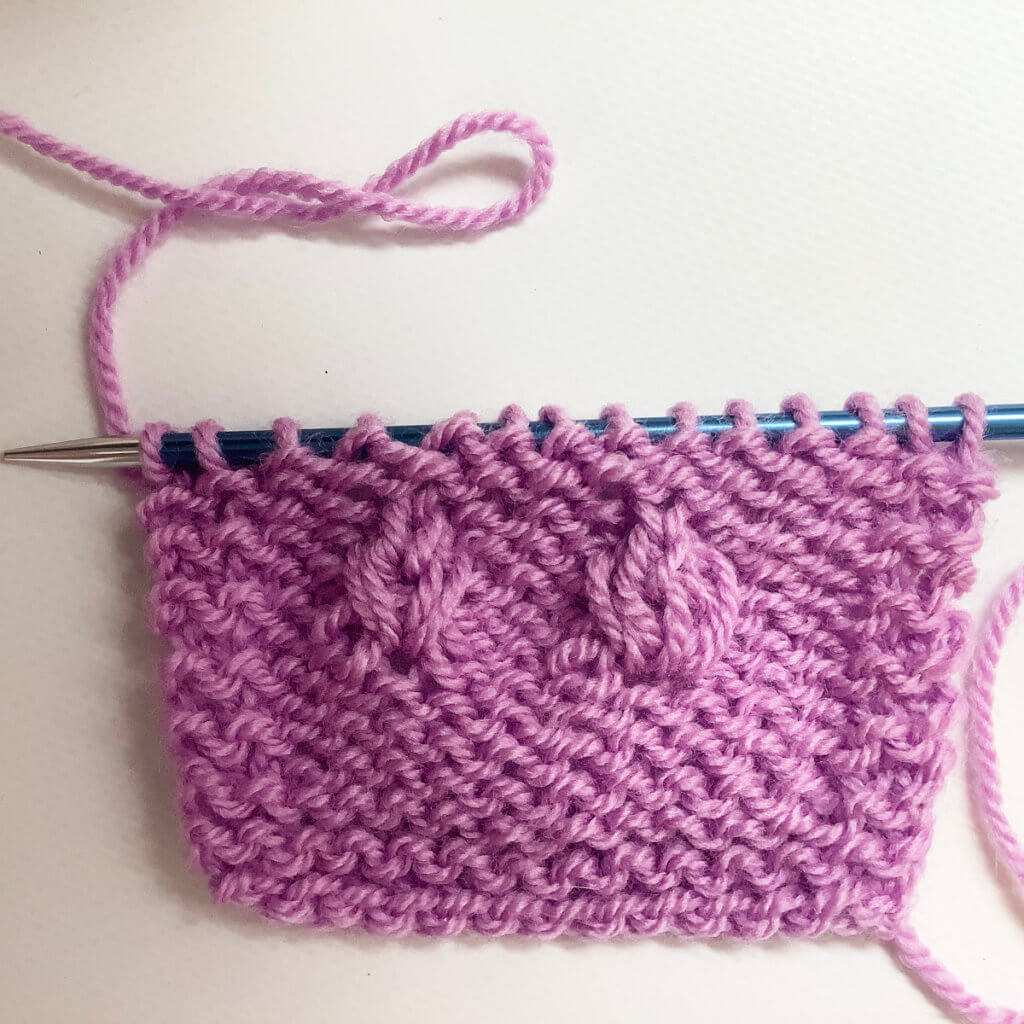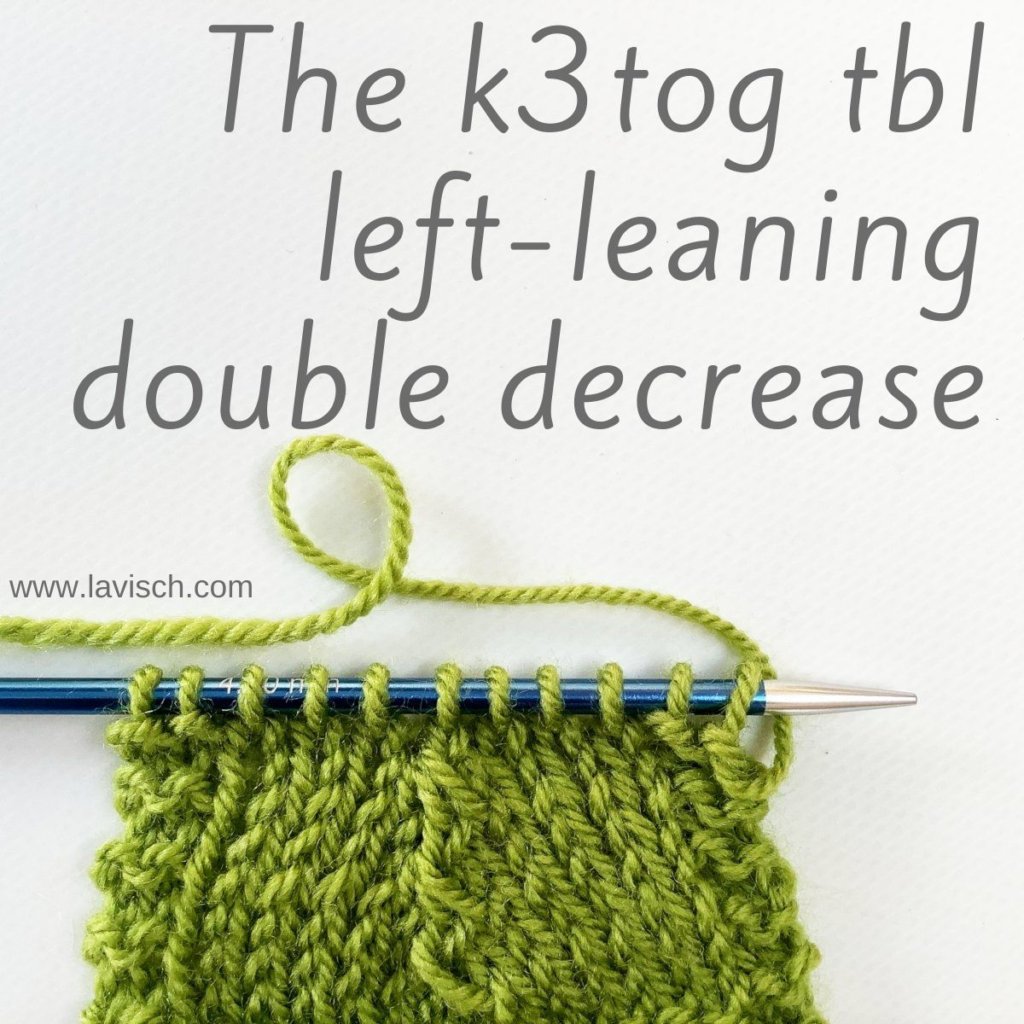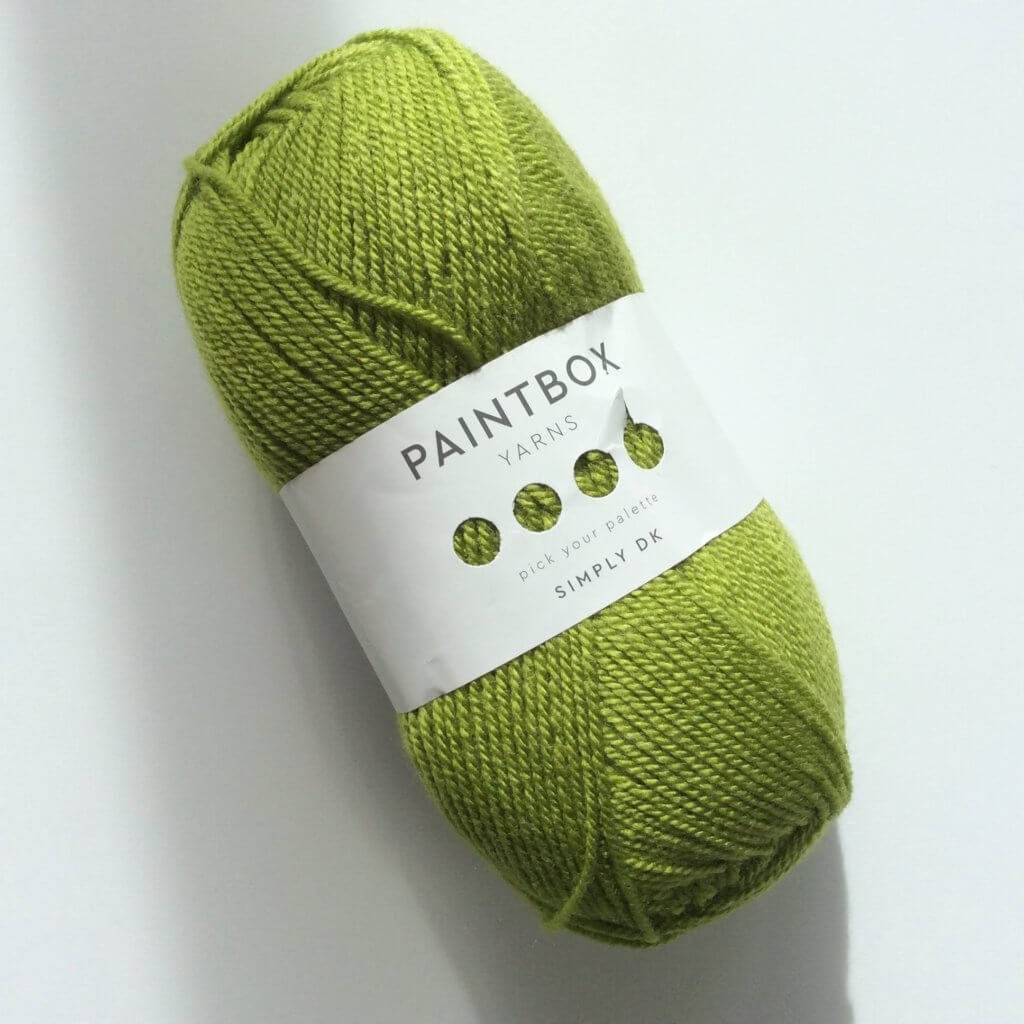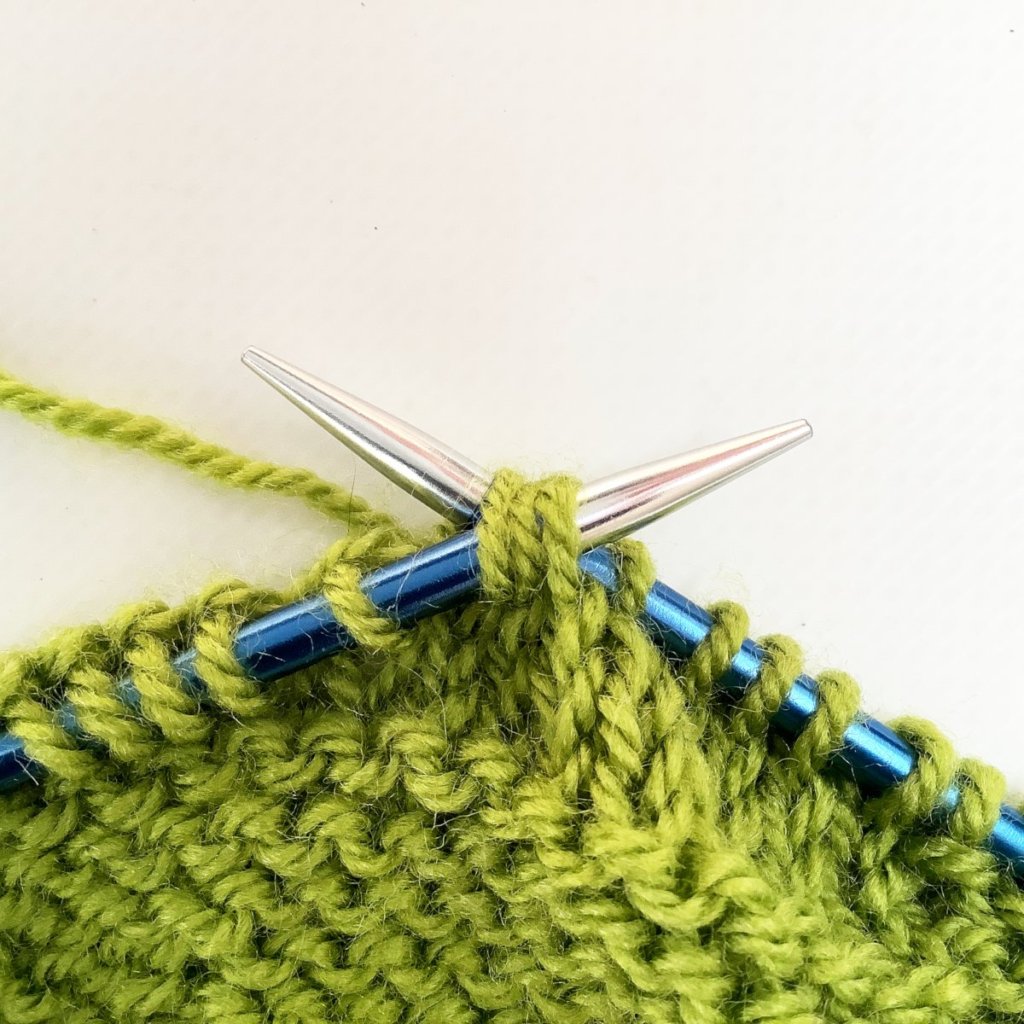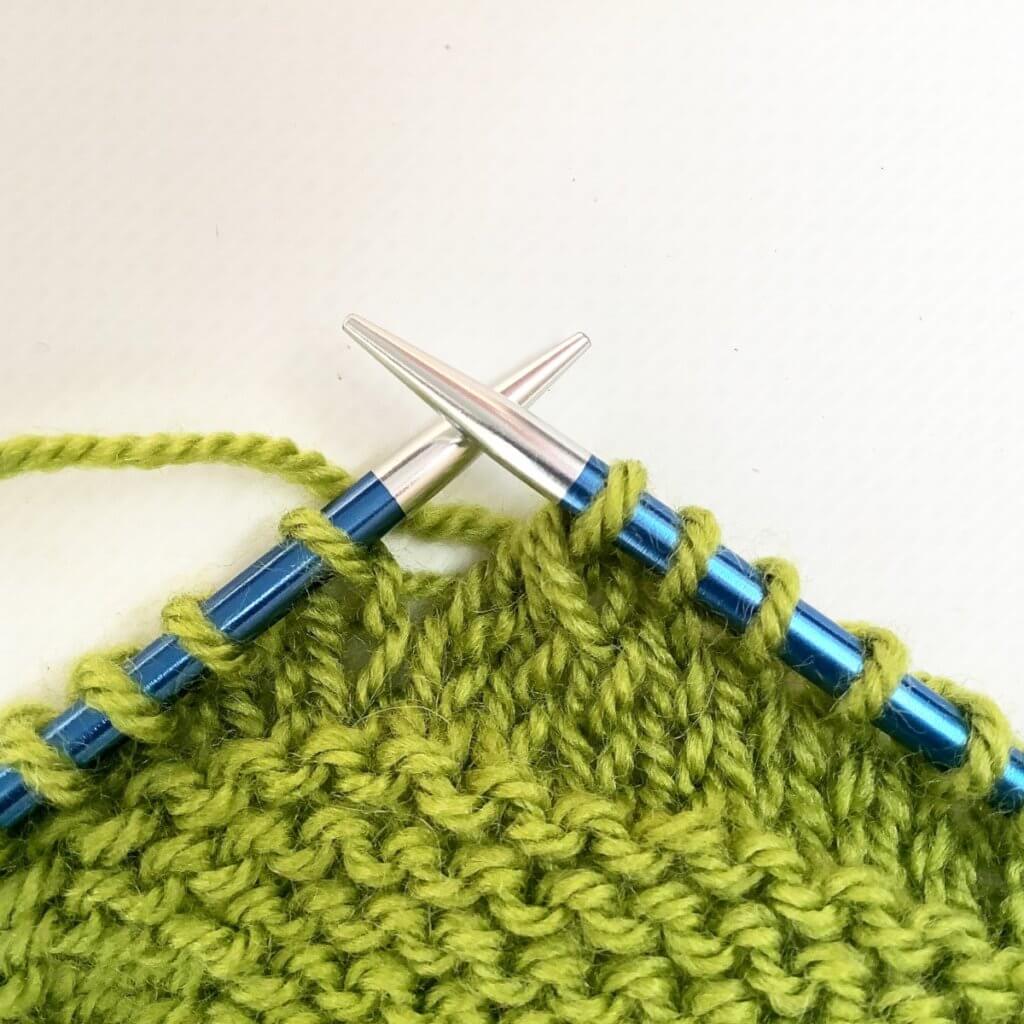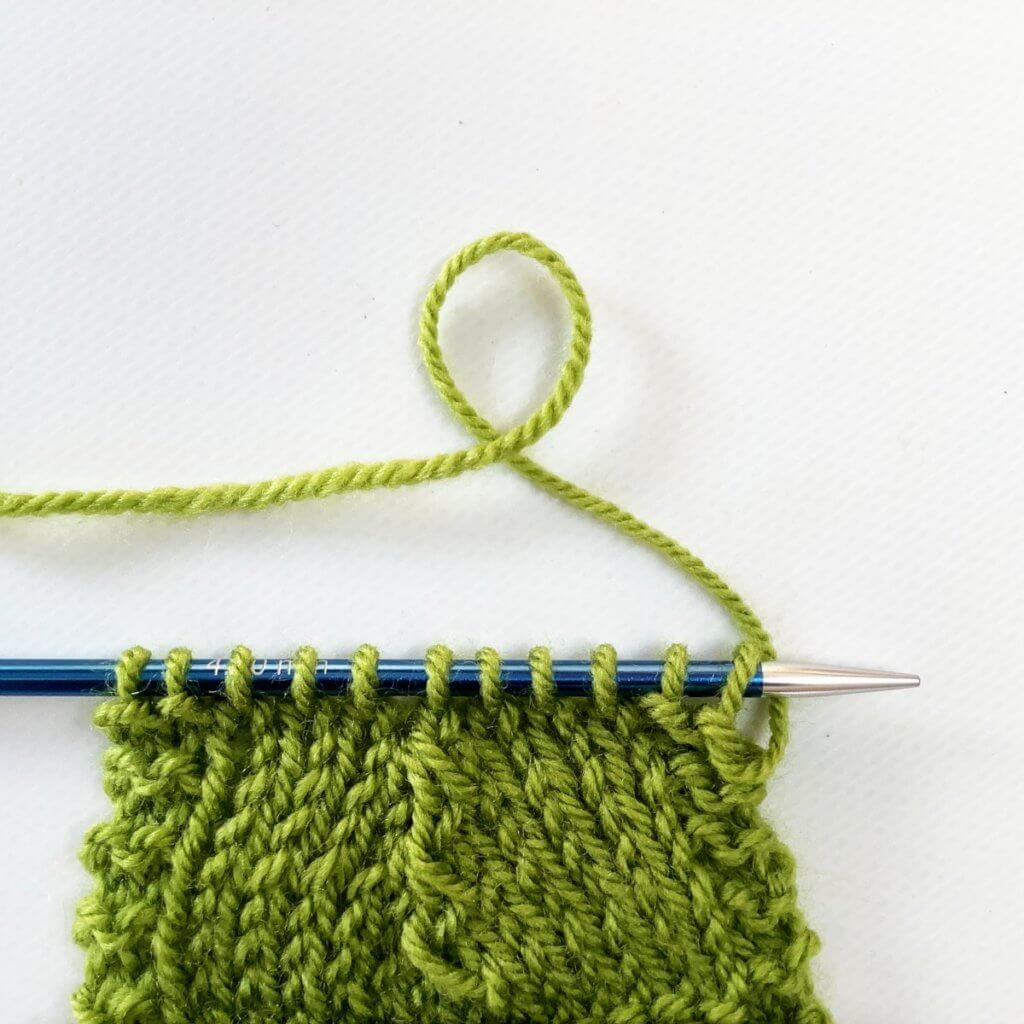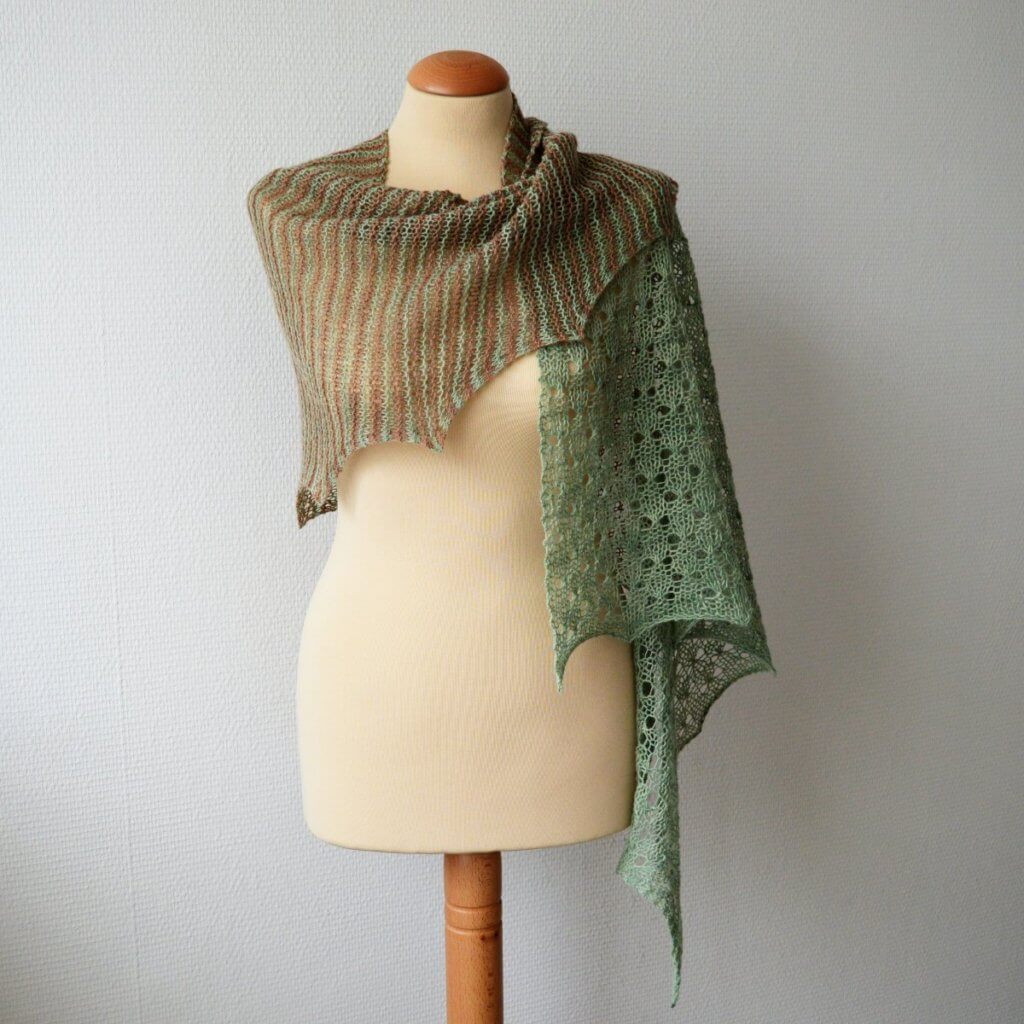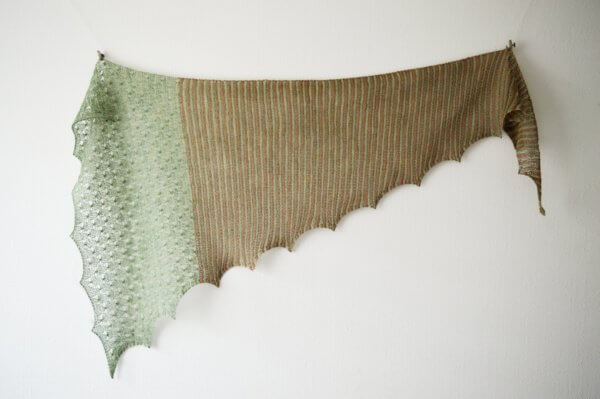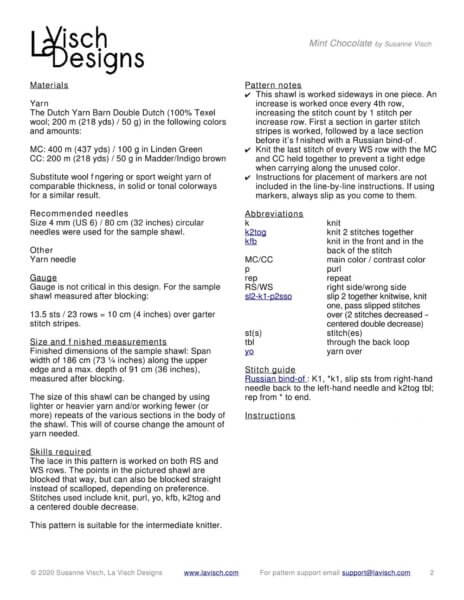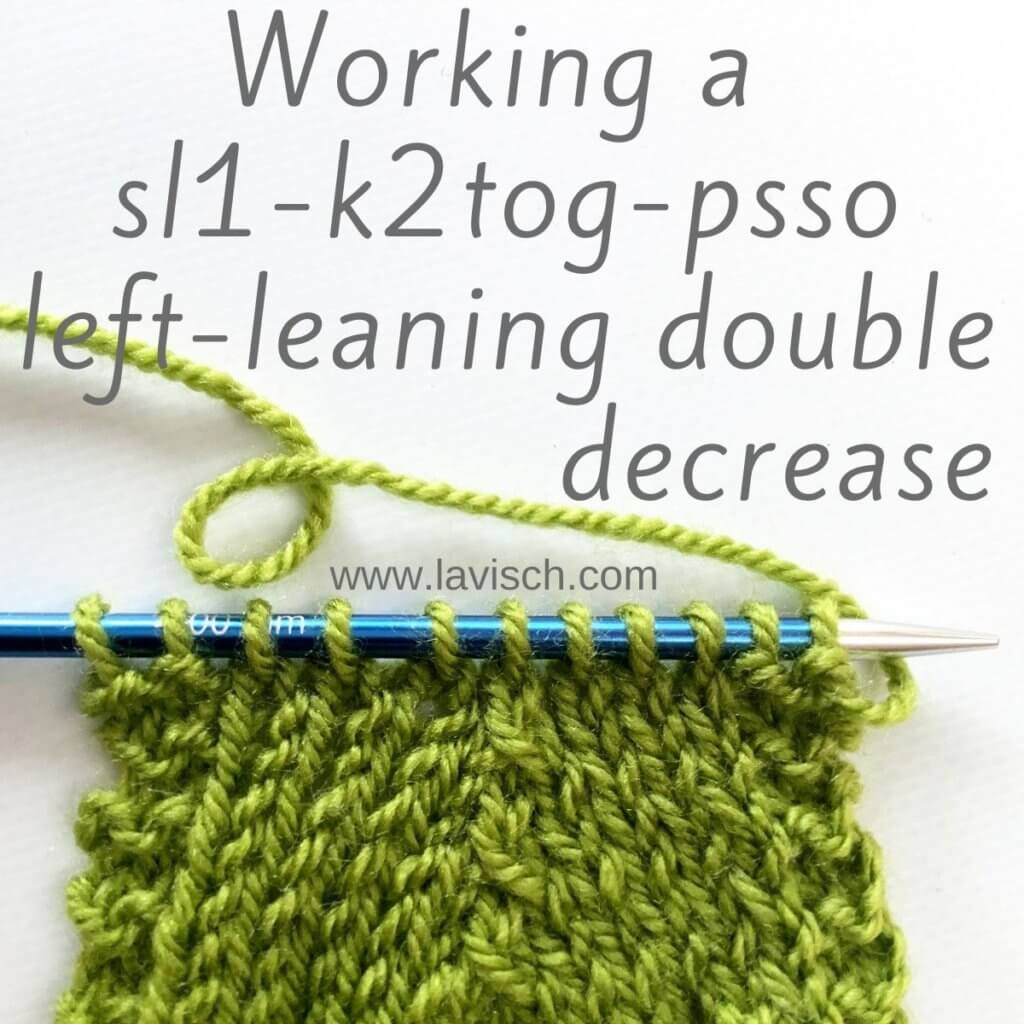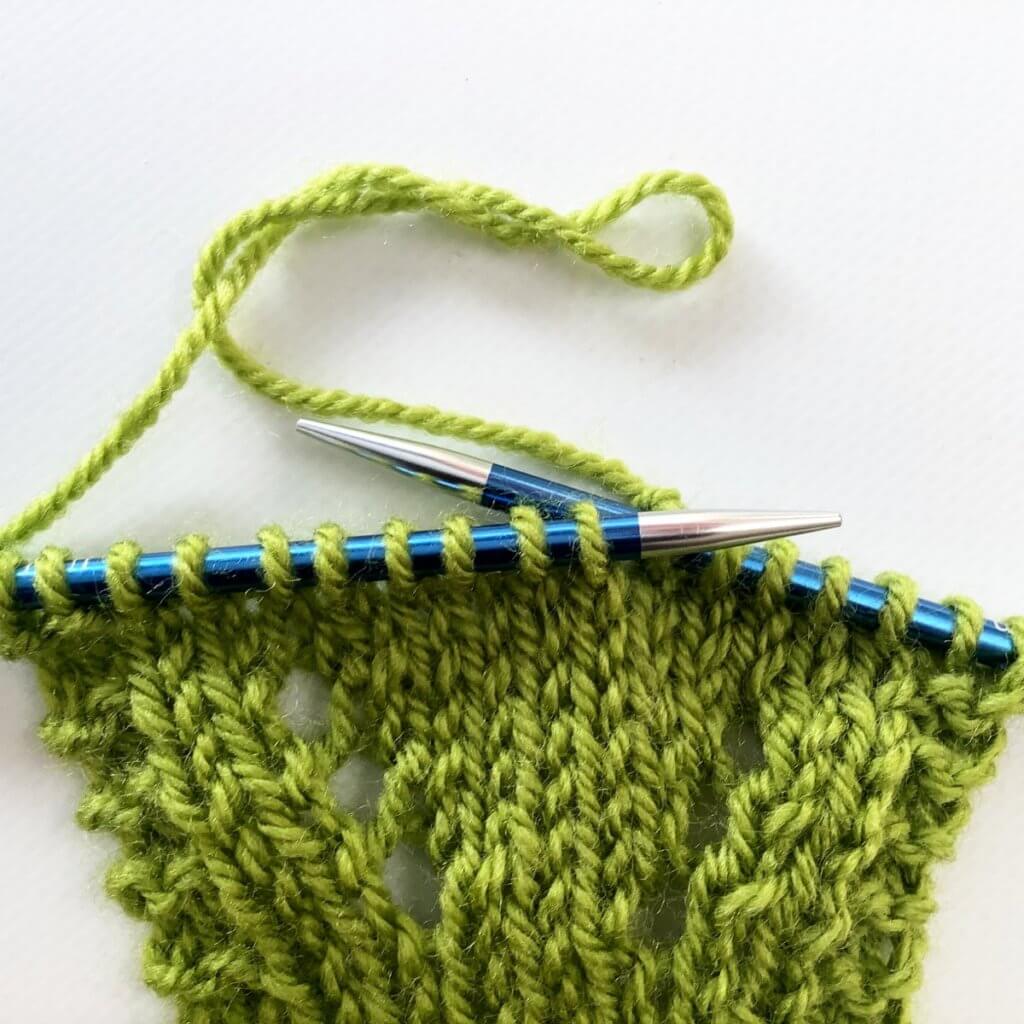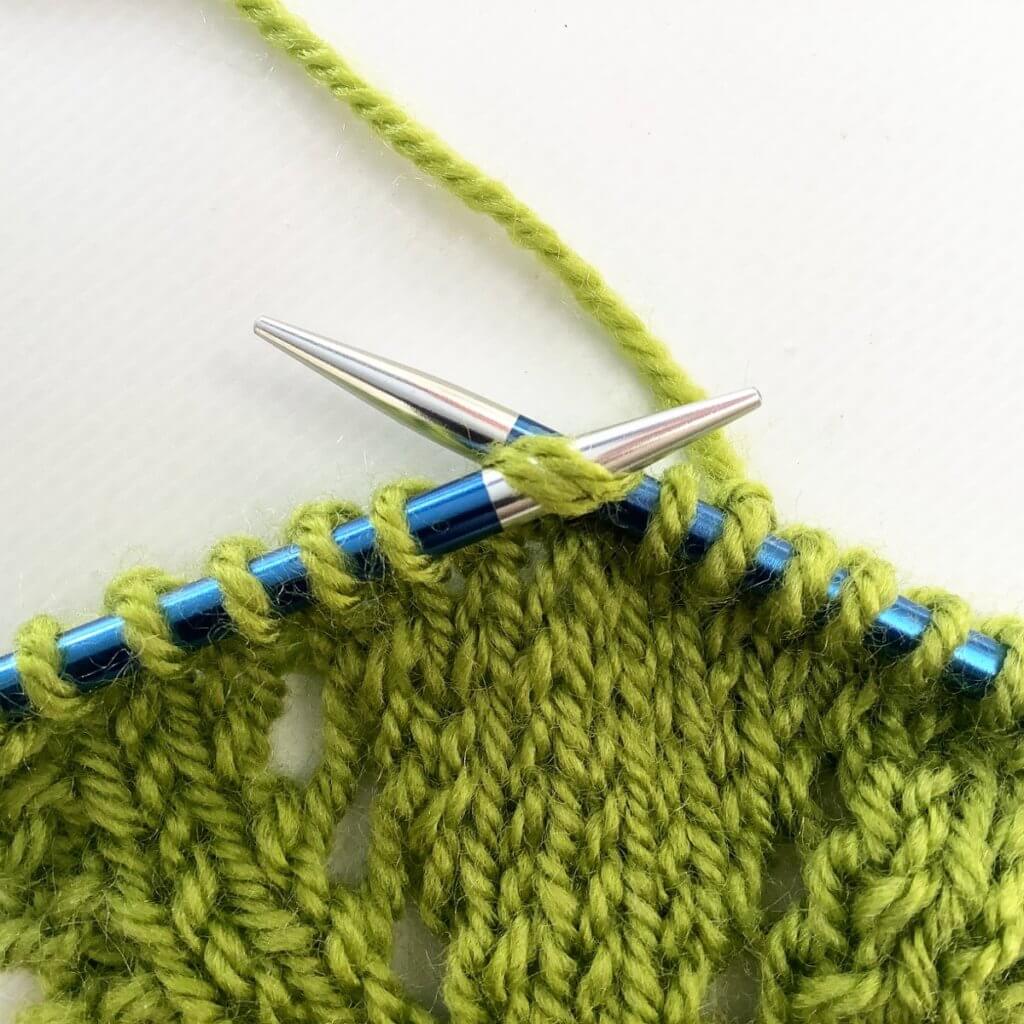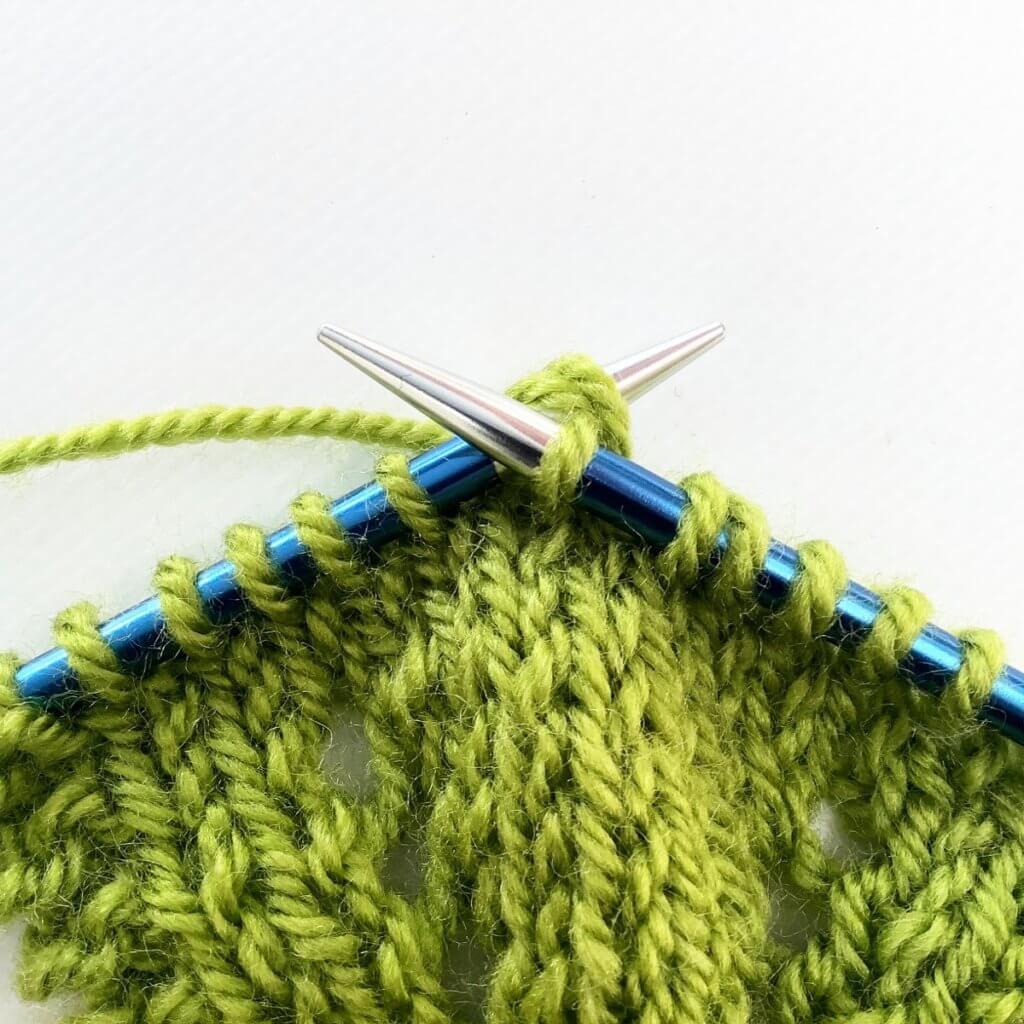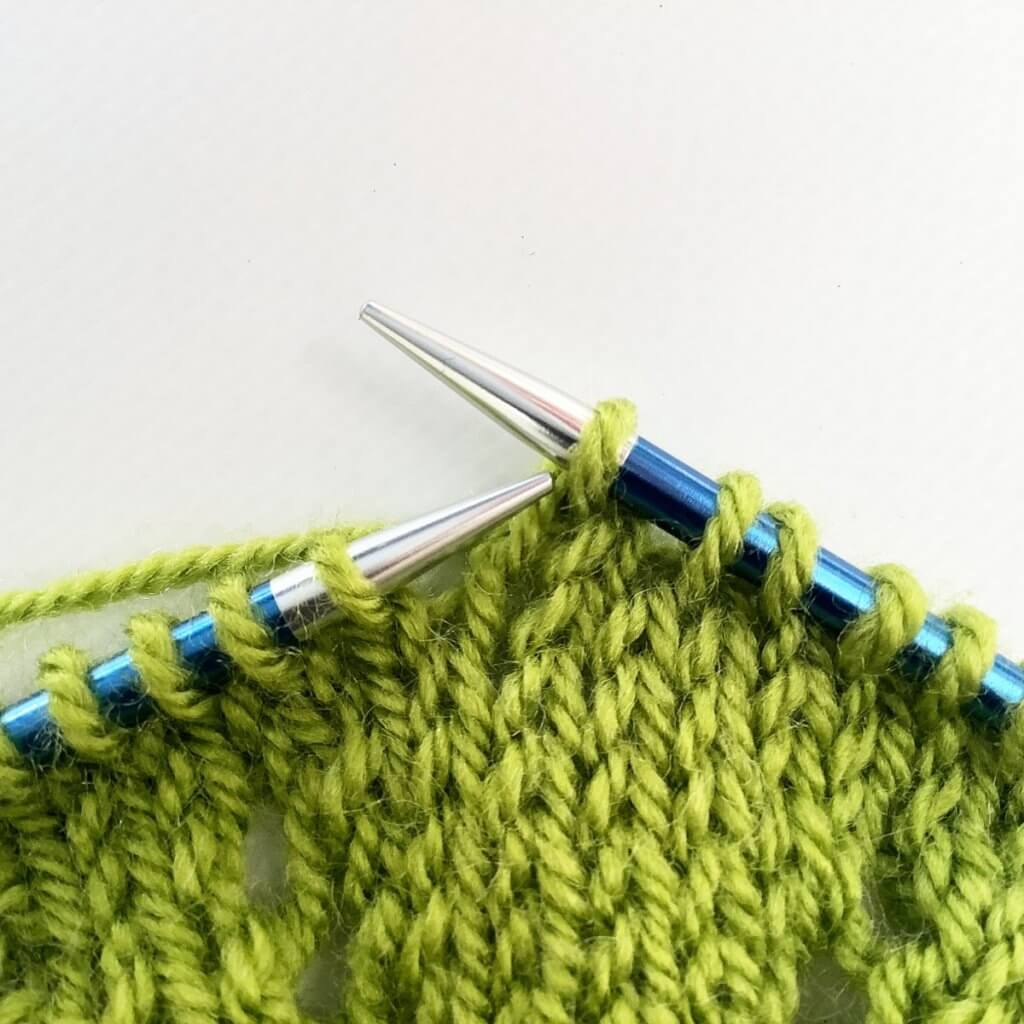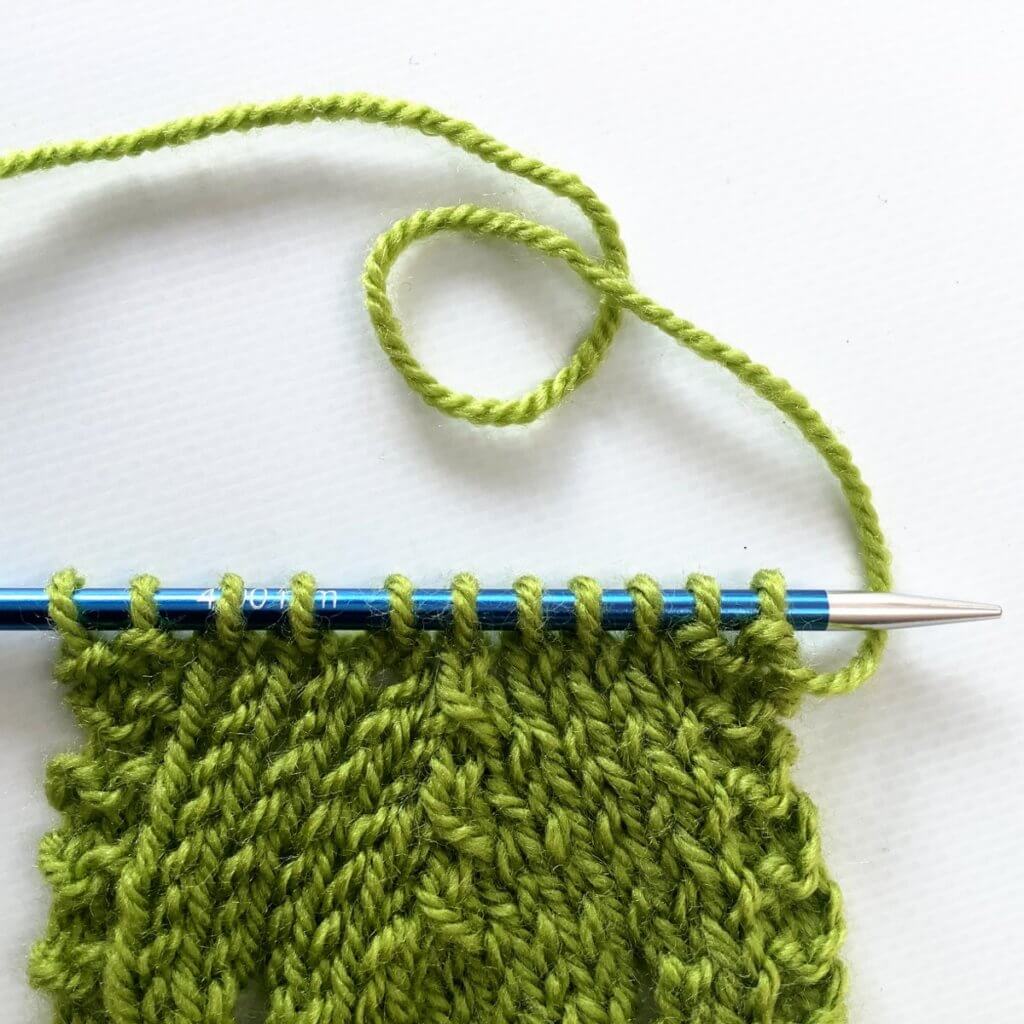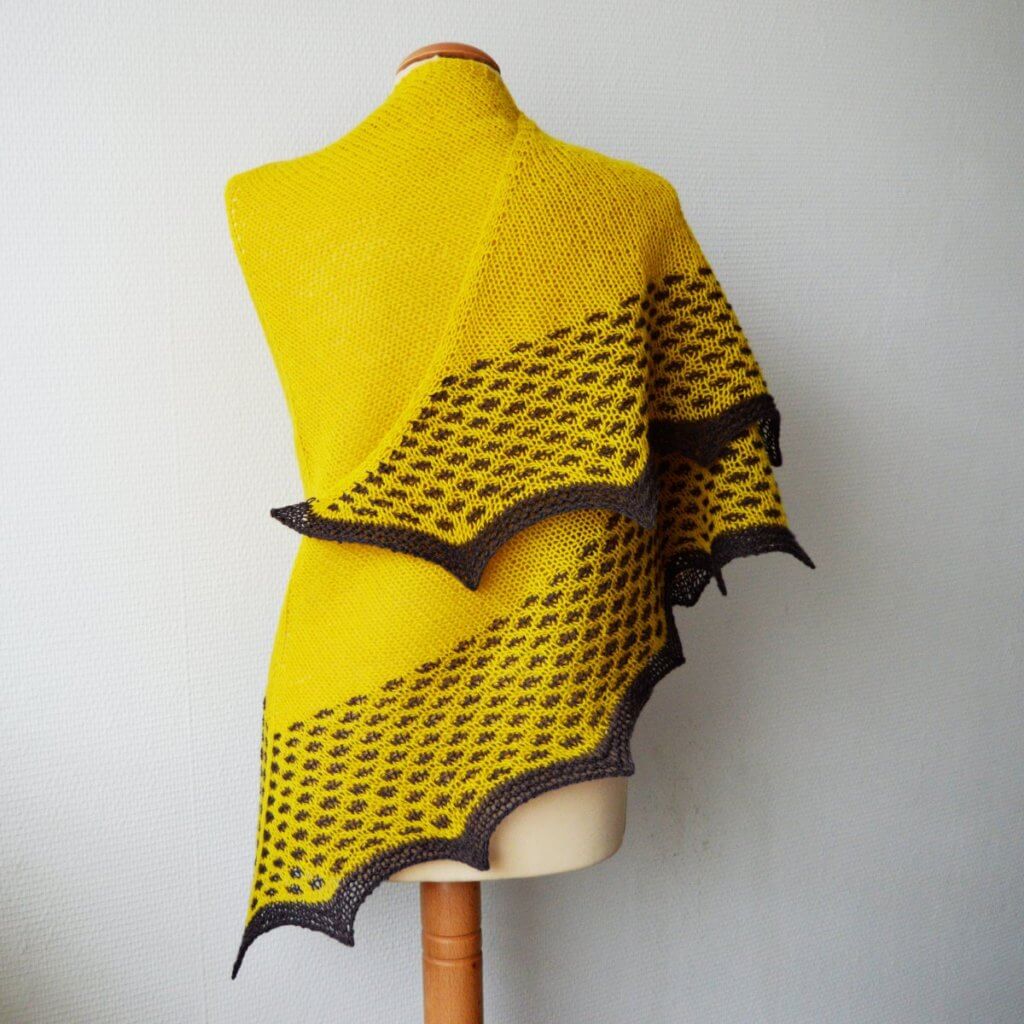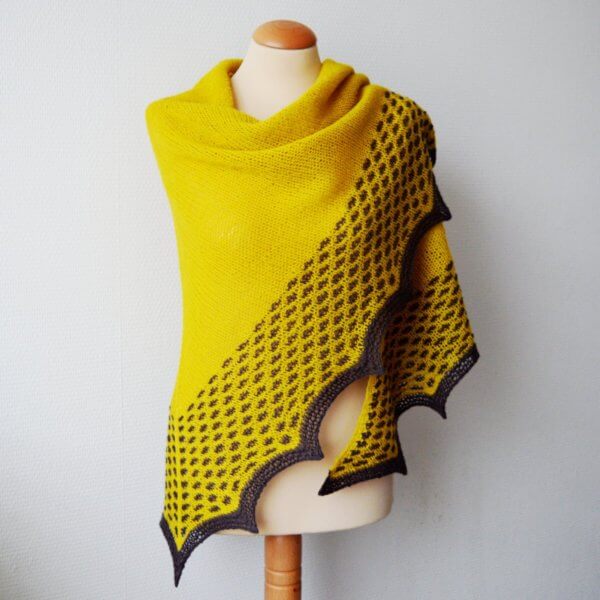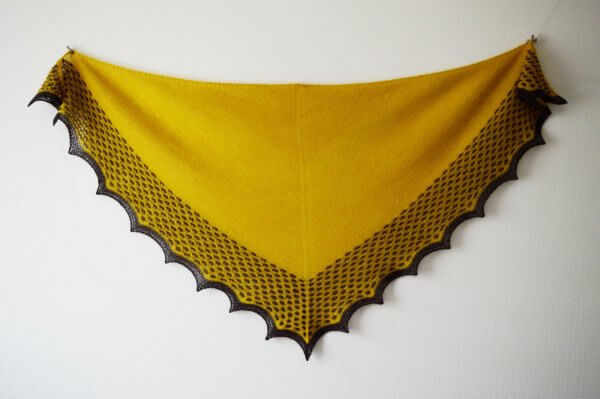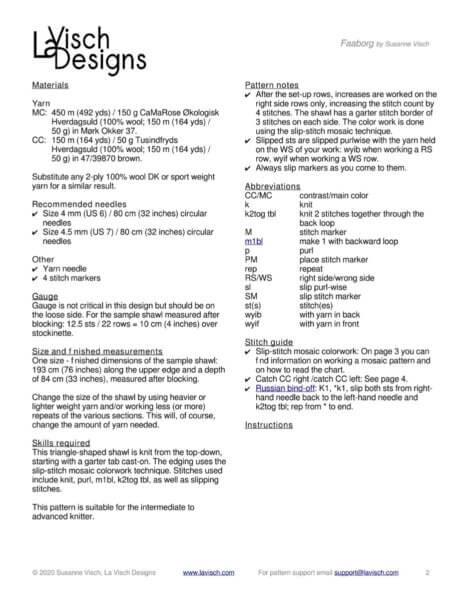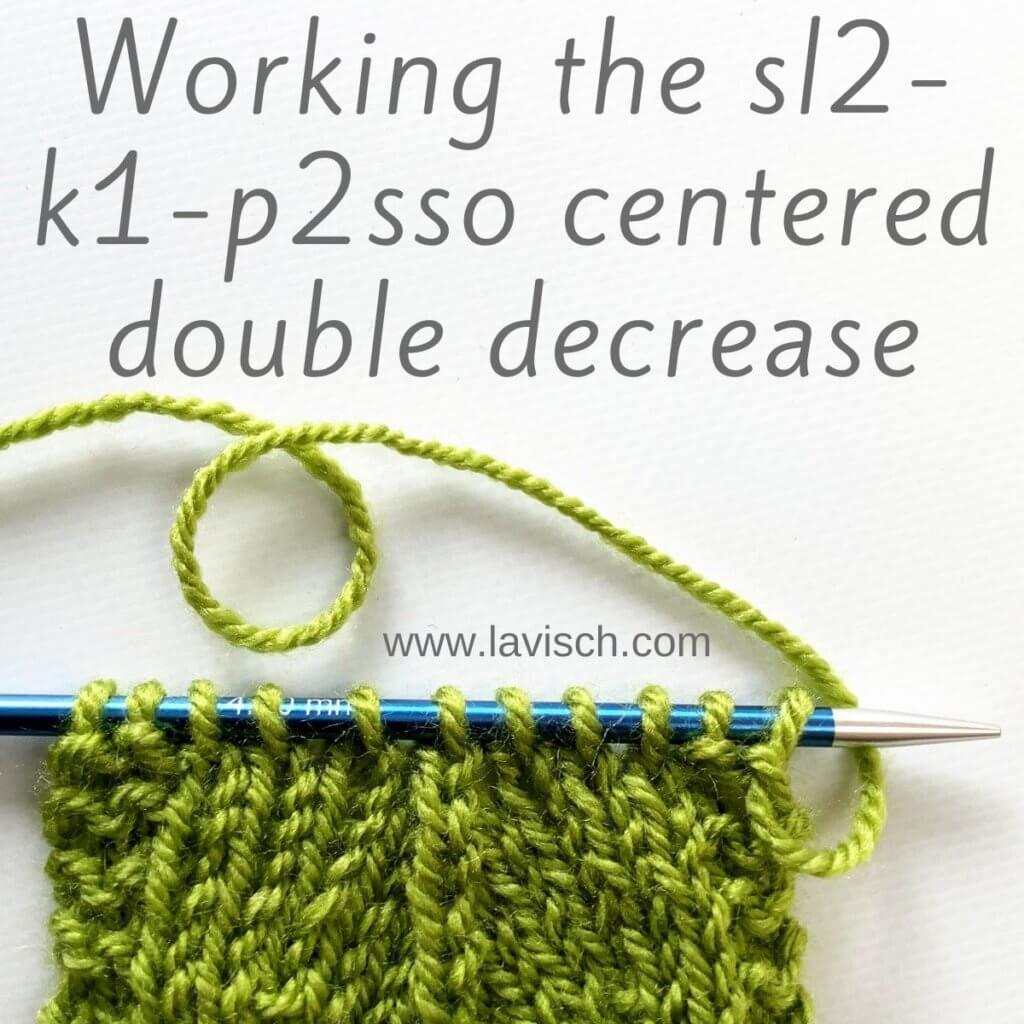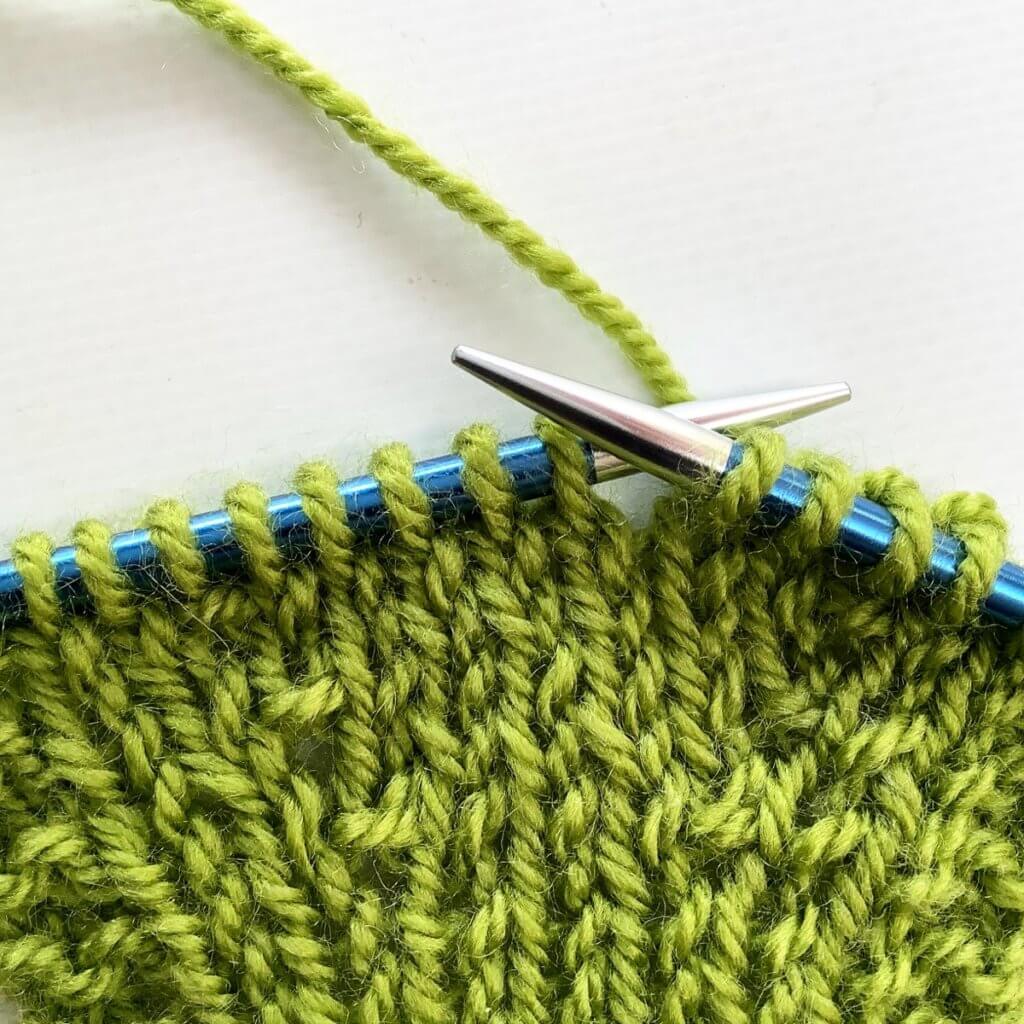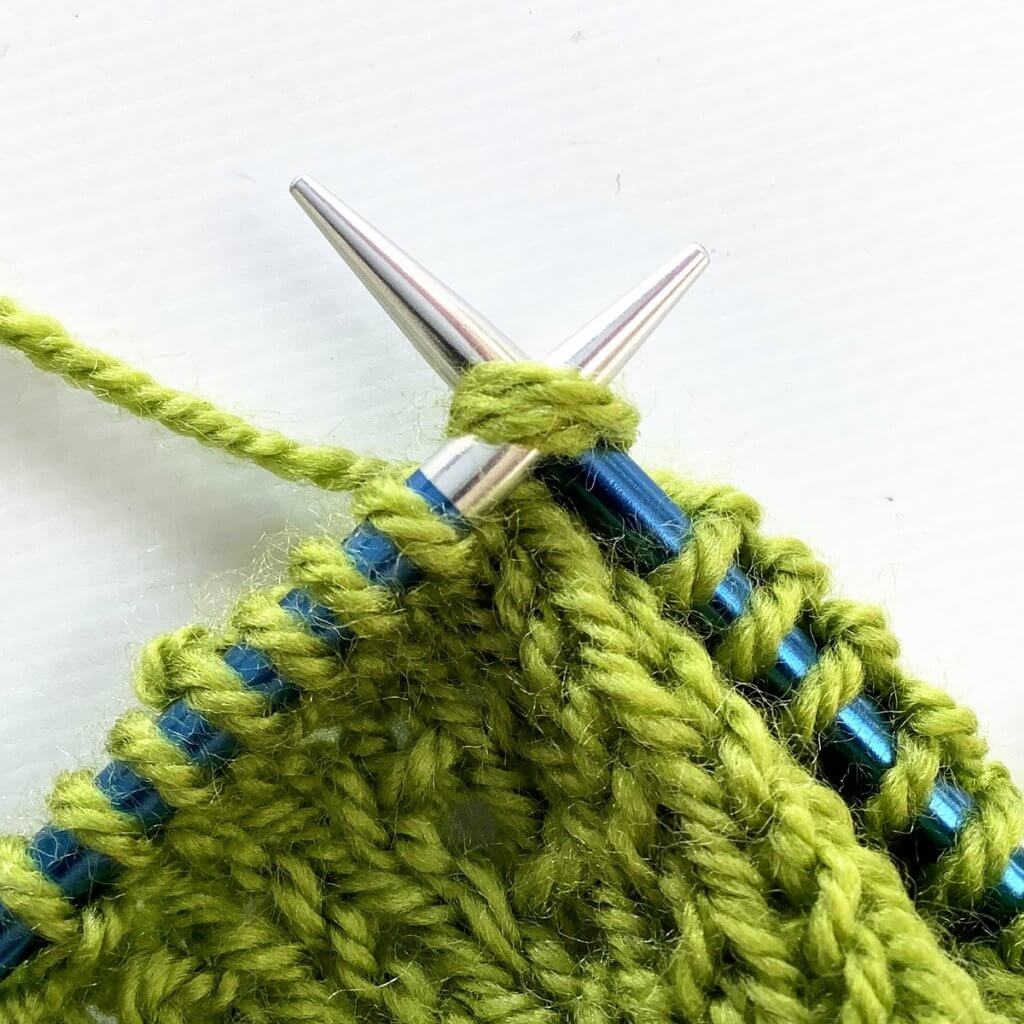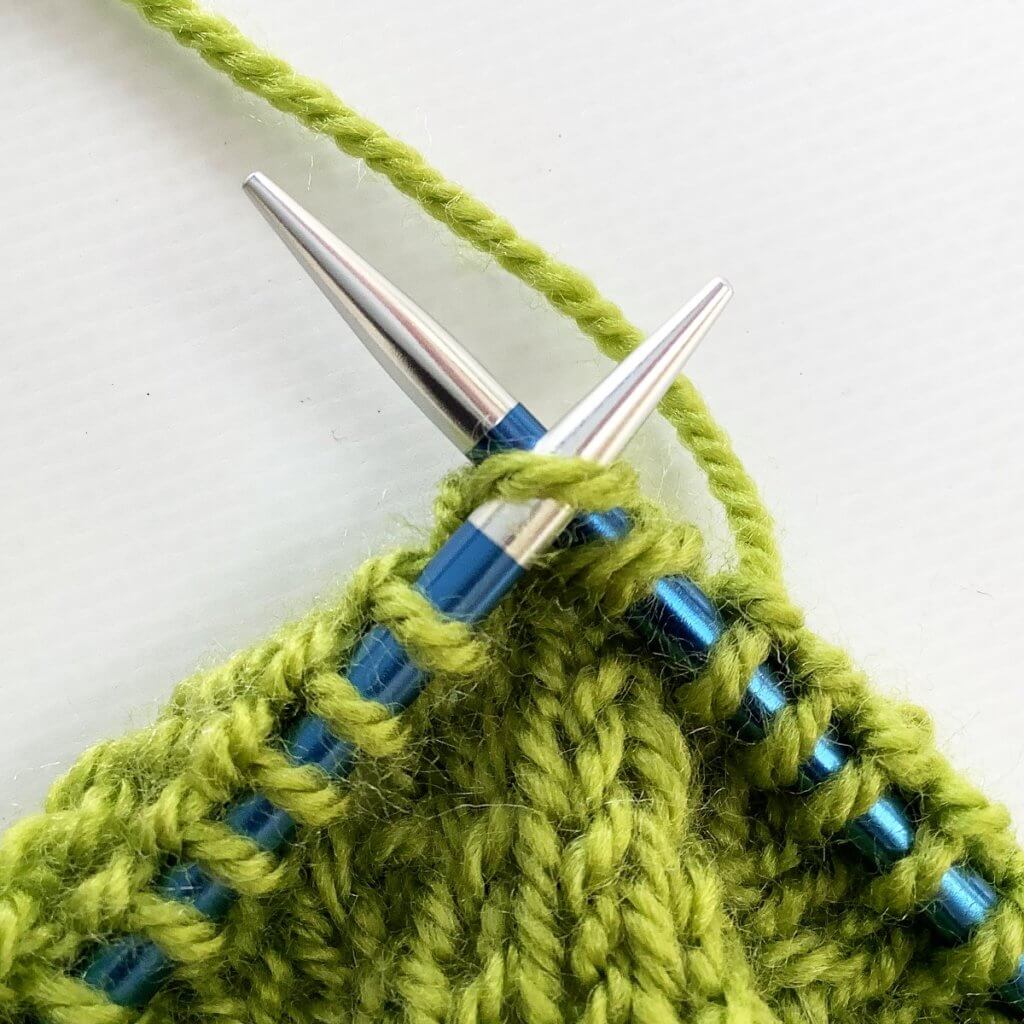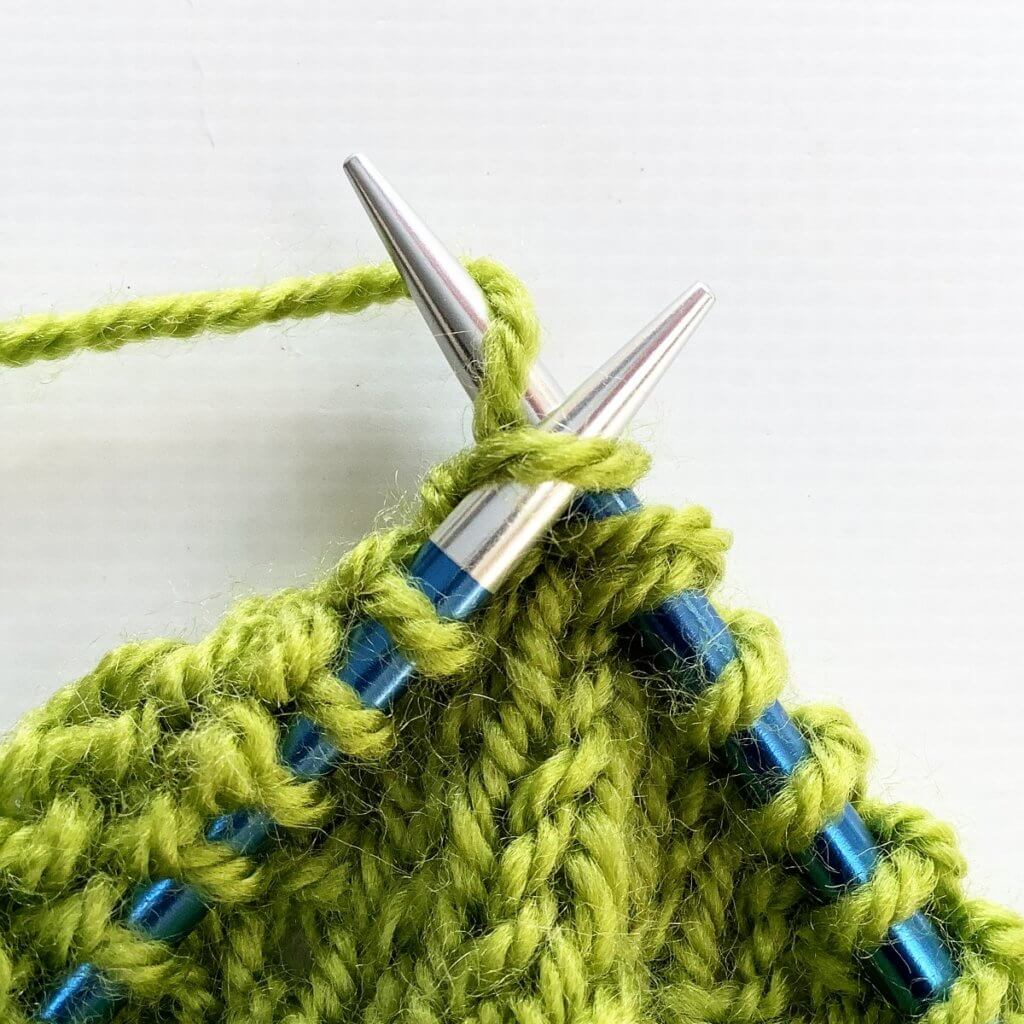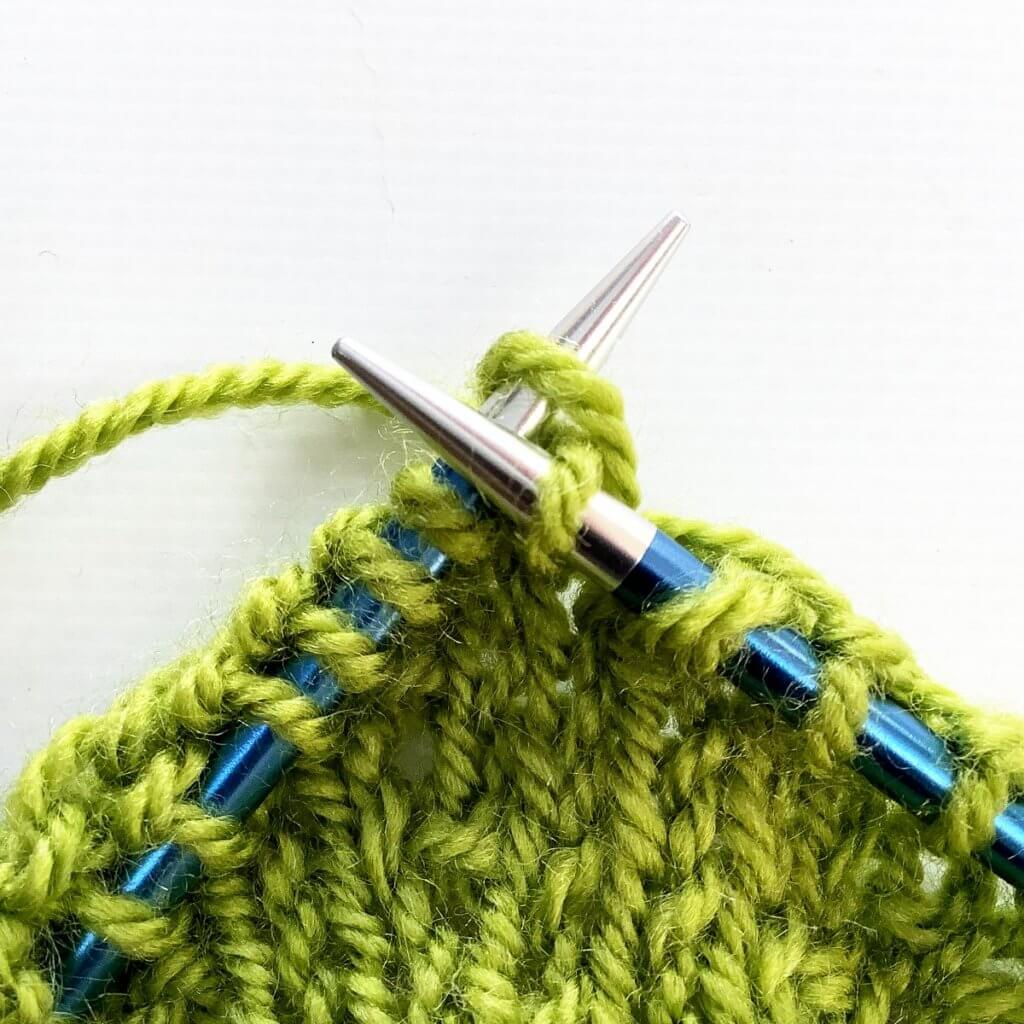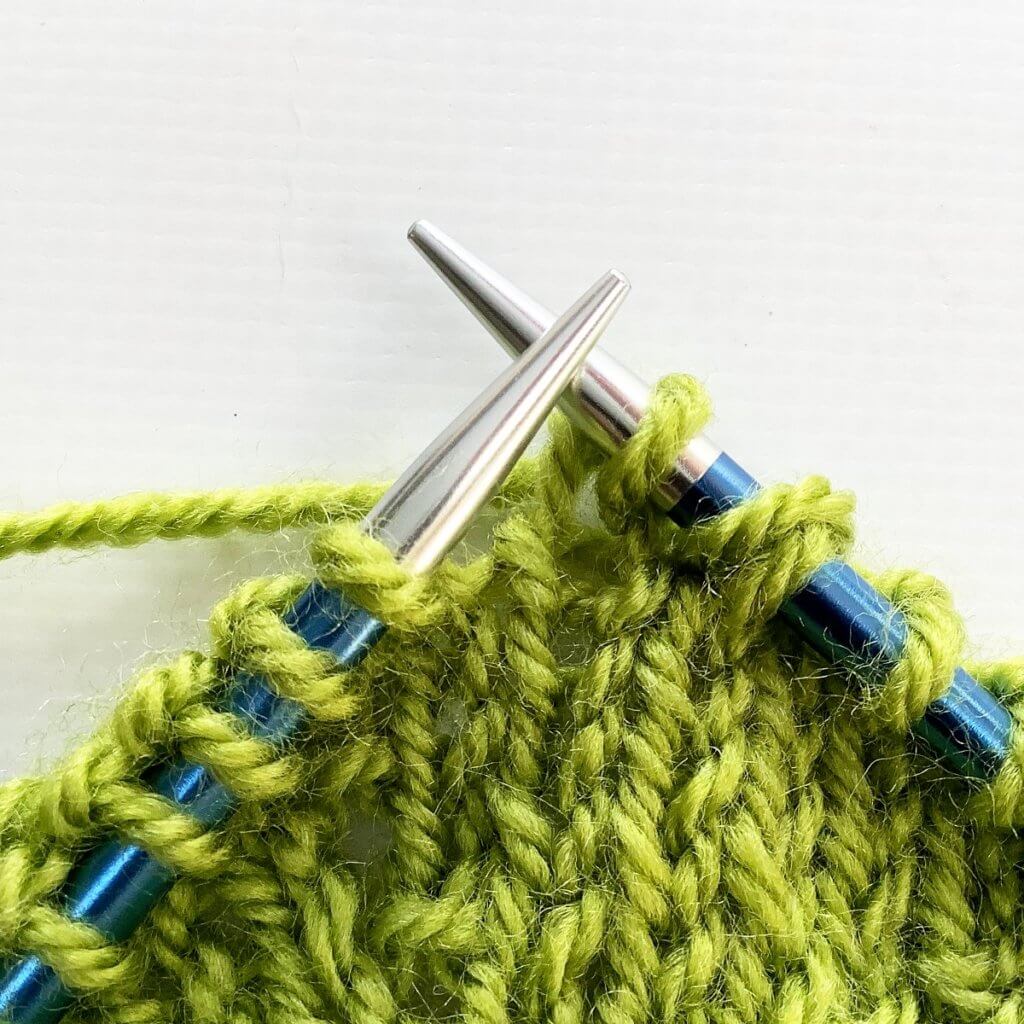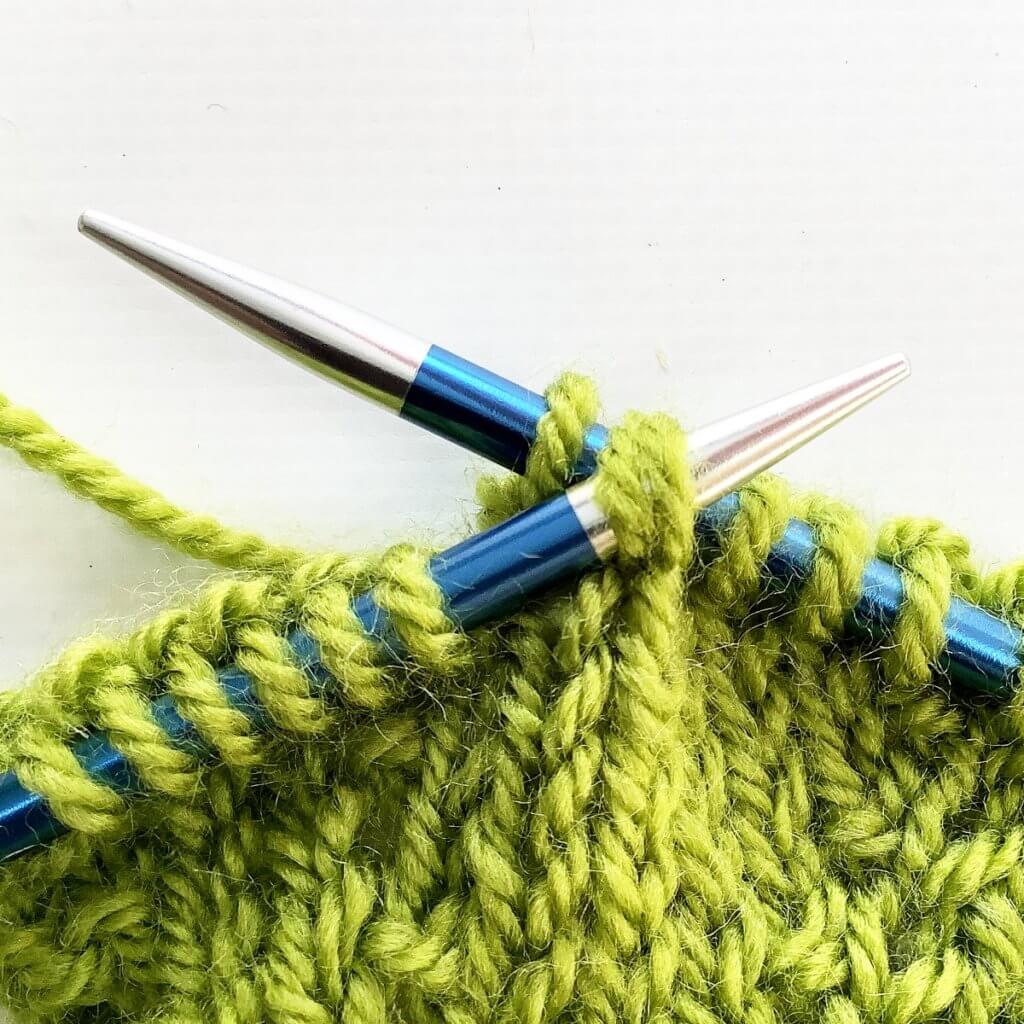tutorial – working the knit 1 below (k1b) stitch
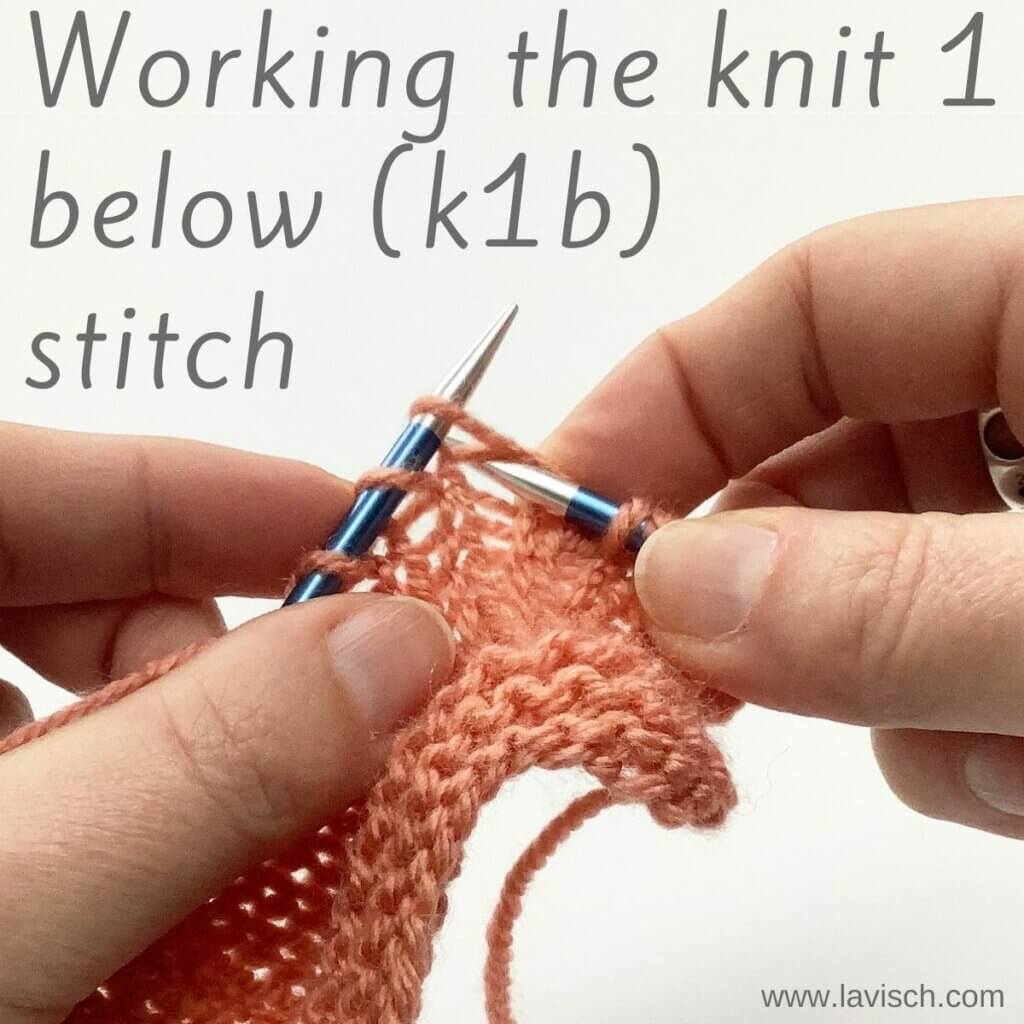
There are cases in which skipping the row on your needle for particular stitches is desired, and one is to knit or purl in the row below that one. In other words: you knit/purl into the stitch below where you normally would, exactly as the name suggests. Think, for example, of Fisherman’s Rib. In a previous tutorial I already showed you how to work the purl 1 below stitch, so now it’s the turn of the knit 1 below! The main challenge in working this stitch is recognizing the stitch to insert your needle in. So that’s what I’ll be showing you in this tutorial on how to work the knit 1 below or k1b stitch.
Materials used
Yarn: * Paintbox Yarns Simply DK, a good value, good quality 100% acrylic yarn, here in the colors 155 Vintage Pink and 125 Spearmint Green.
Needles: * KnitPro Zing Fixed Circular Needles. In this tutorial, I used the 4 mm (US 6) size with a cable length of 80 cm (32 inches).
Working a knit 1 below or k1b step by step
In patterns, you may encounter the following description of this stitch:
Knit 1 below (k1b): Knit into the stitch 1 row below the one on the needle by inserting the needle from front to back. Knit this stitch, then pull the worked stitch and the stitch above off the needle together.
But how to actually do this? Read on!
- First, work your way across the row until you’ve reached the point where you want to make the stitch
In this case I’m making the k1b4 stitches in from the right edge.
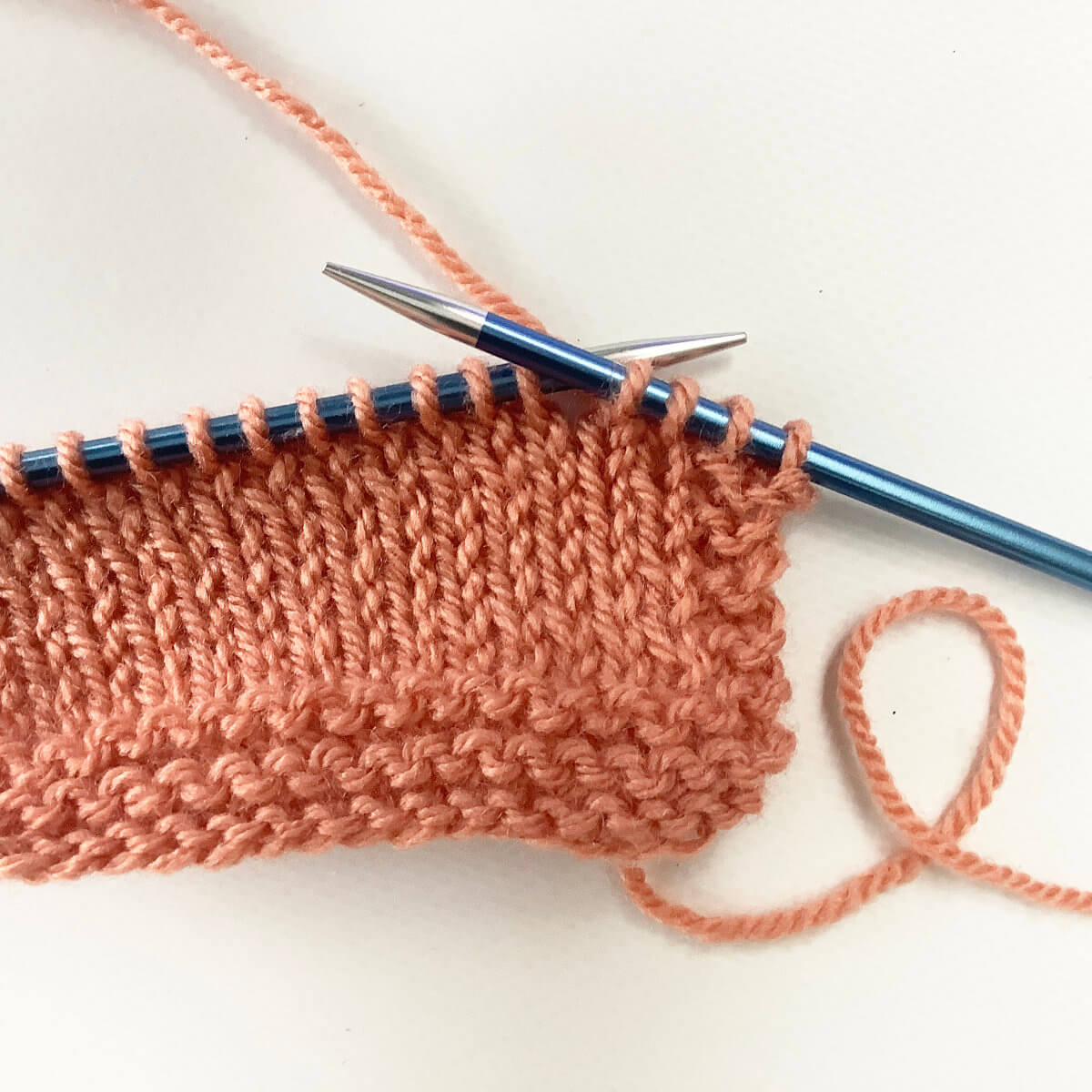
- Identify the correct loop to insert your needle in.
Normally, you’d insert the right-hand needle in the loop that’s on the left-hand needle. If we go down a row, you see the stitch we want (pointed out by the extra needle), hugging the loop that’s on the needle.
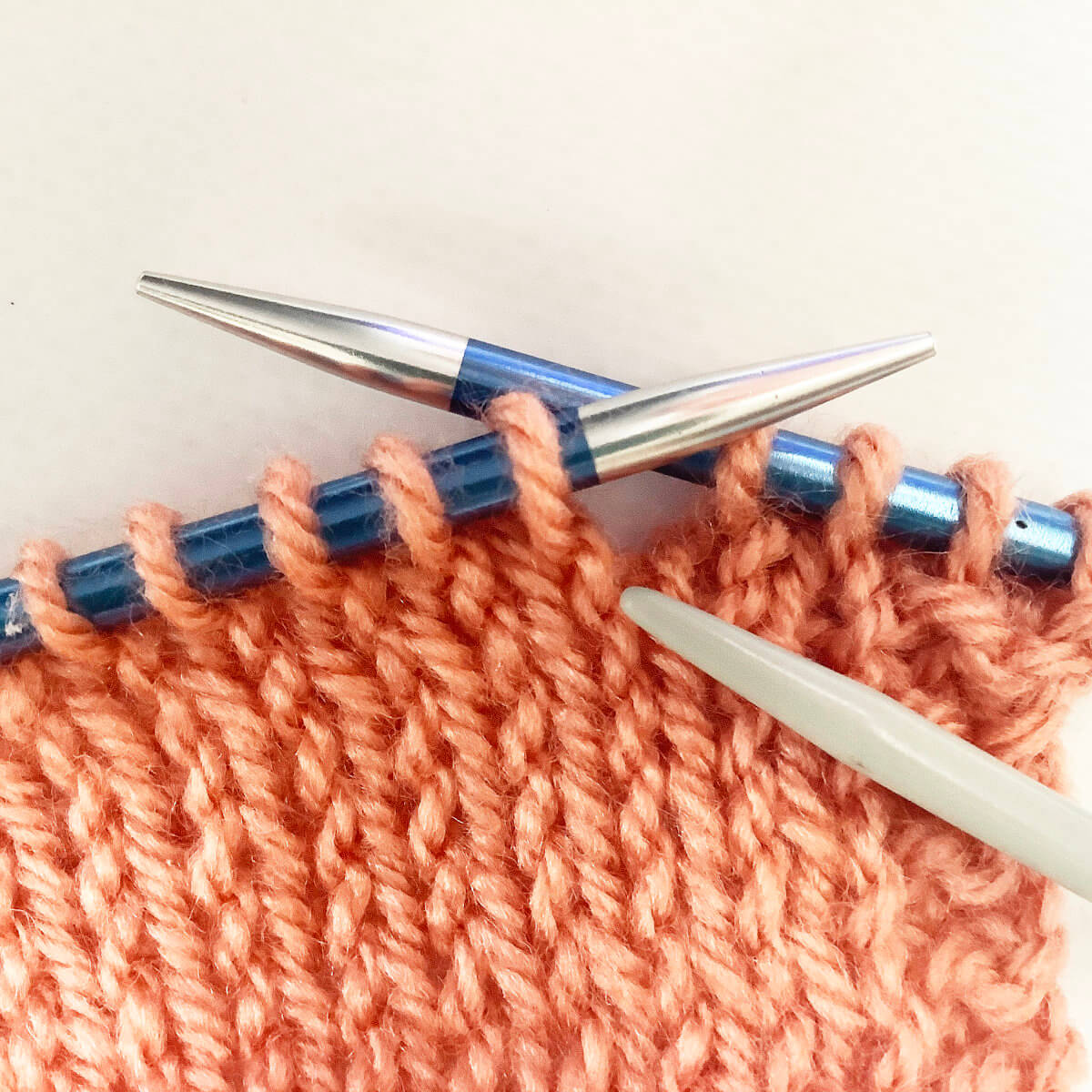
- Now, insert the right-hand needle knit wise in the stitch we’ve identified.
You can see it more easily if you pull down the fabric a bit with your fingers.
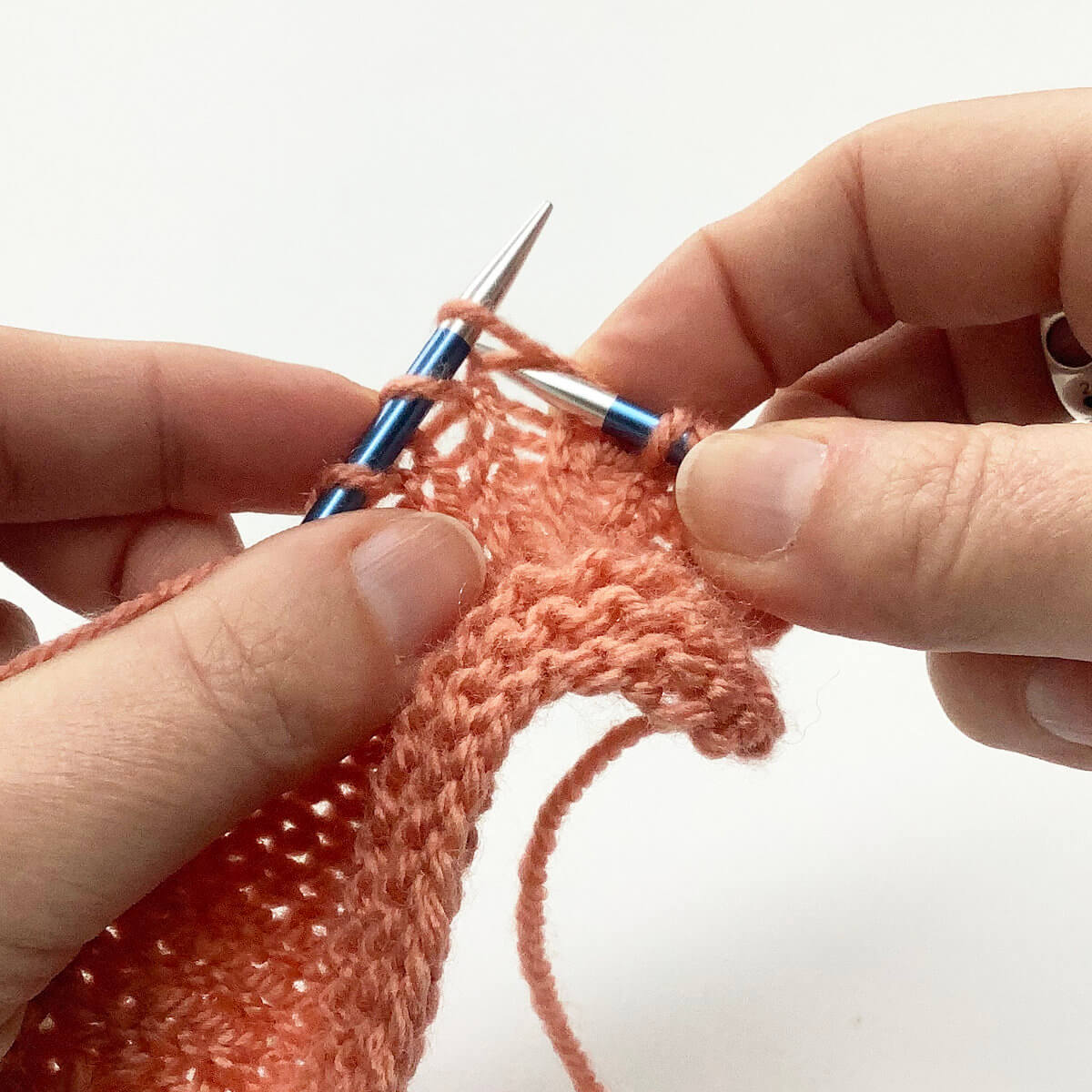
- Now wrap your working yarn around the needle…
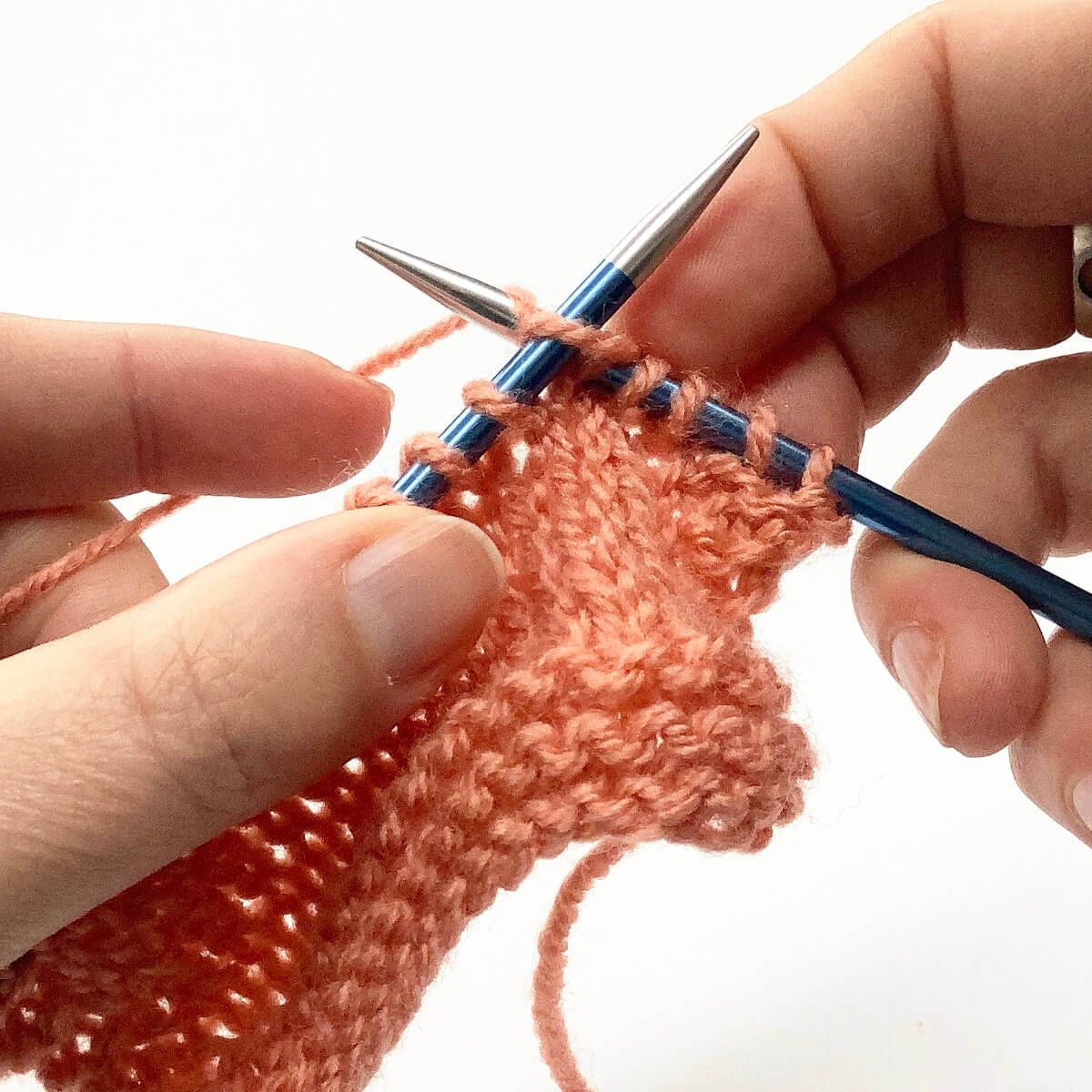
- …. and pull it through the stitch.
See that you’re actually pulling it through 2 stitches at once? That is, the one on the needle and the one directly below it.
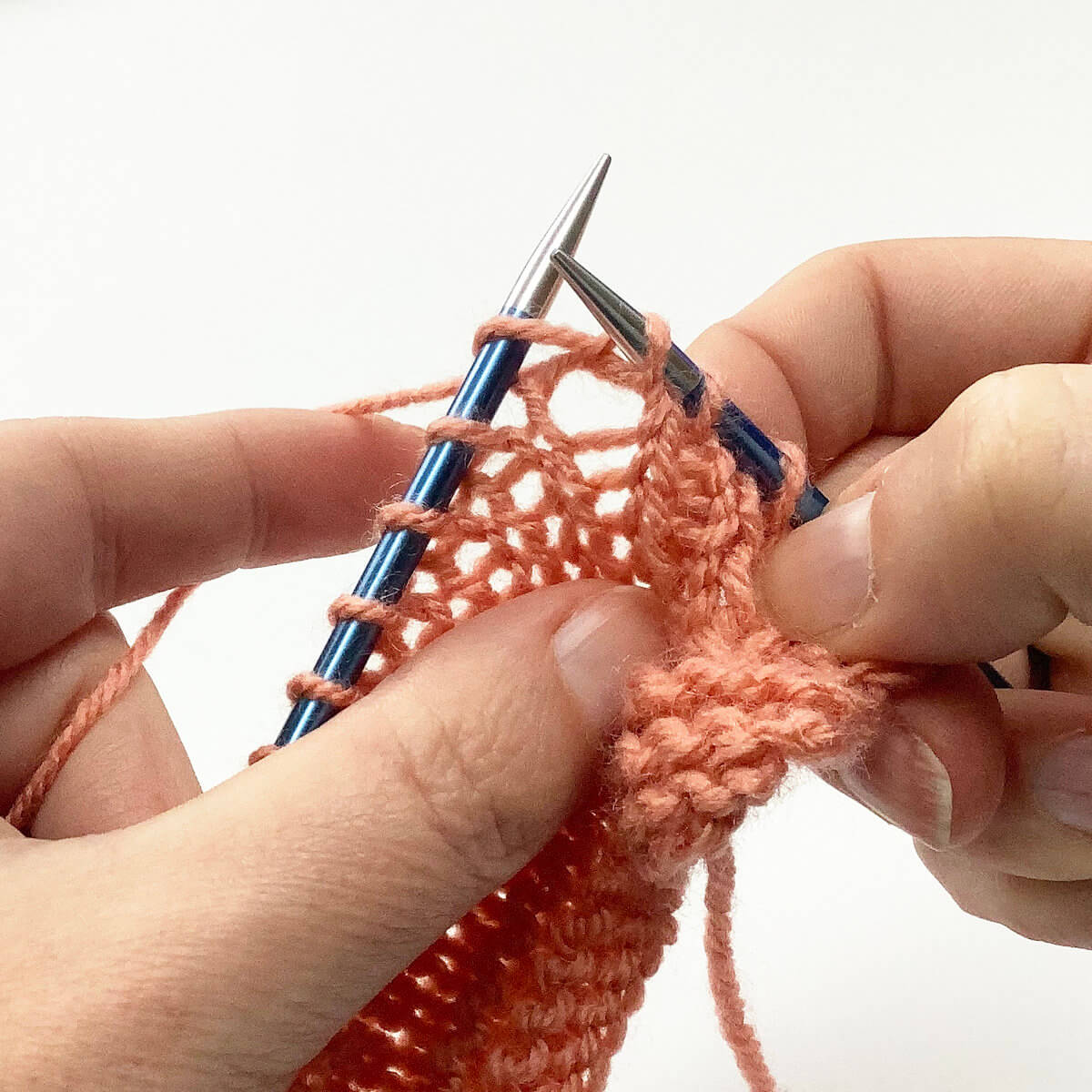
- Finish the stitch by slipping the top stitch off the left-hand needle without actually working it.
Because the fabric is secured by knitting into the stitch below it, the stitch won’t run down unraveling.
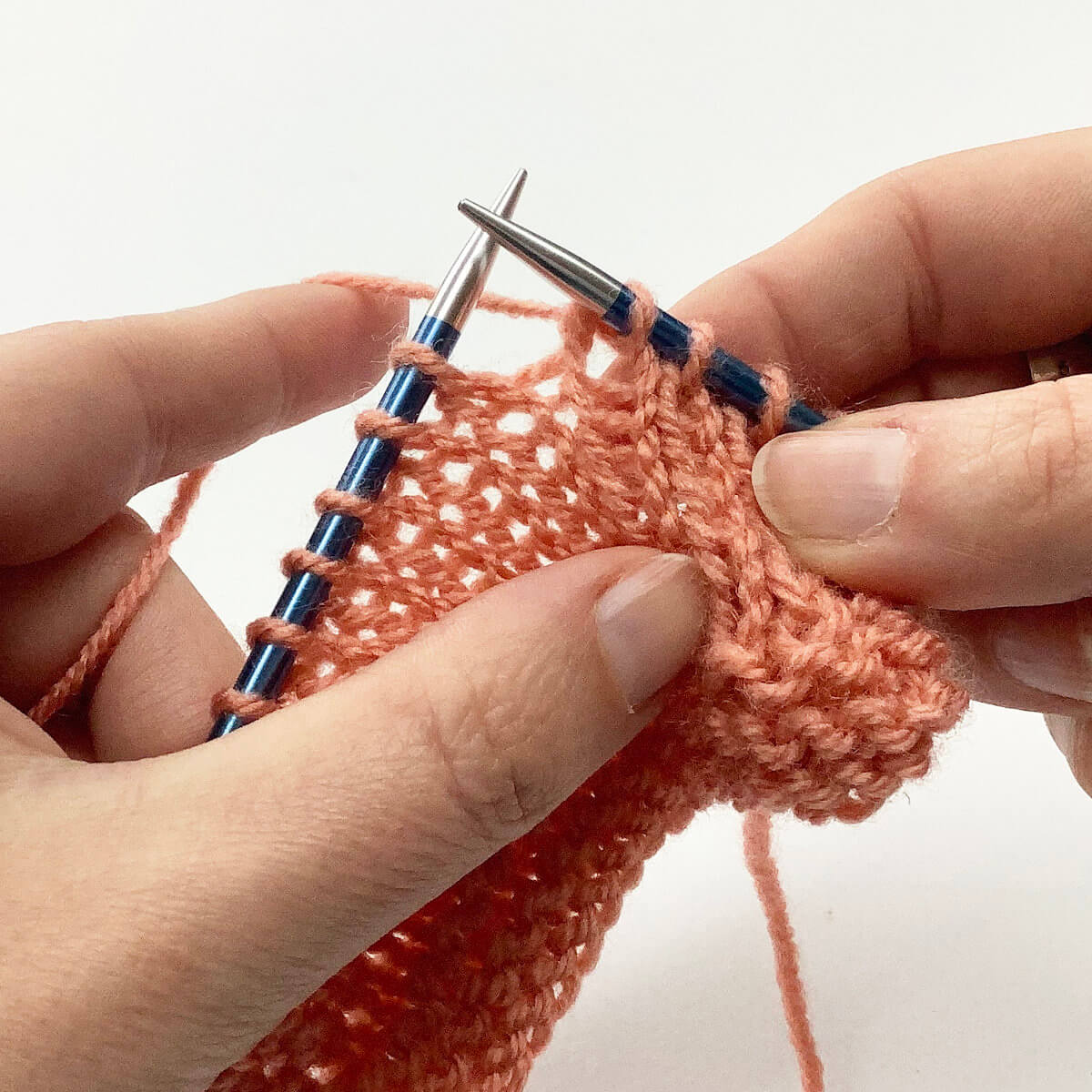
And that’s all there is to it!

Thanks to my Patreon supporters for bringing you this freebie! Creating quality patterns and tutorials is a lot of work and resource-intensive. However, I find it important to give you free content like this tutorial. Thanks to the generous support of my Patreon supporters, I can make it happen. Thank you, patrons! Click here to join, or click here to read more about La Visch Designs on Patreon.
tutorial – working the knit 1 below (k1b) stitch Read More »

